I home stayed in Estonia 24 years ago. My study abroad program in Oslo set up a week-long trip to stay with a family and meet with professors, businesses, government agencies so we could learn about the place, it’s history and what it was doing to move forward. At the time it was within a decade of the country receiving its independence and they were clawing themselves out of the weight of the Soviet era. The stories of what the people and place had been through were mind blowing to a young American who had studied history and was now seeing, hearing, and feeling it first hand. I have not forgotten Estonia and was excited to see how the place had changed in the span of twenty years.
24 years ago this was us, climbing an ancient wall to drink wine and gaze over a landscape at the crossroads of history. The four of us were in our early twenties - 3 American, 1 Estonian. I can’t speak to what Ryan saw in his country’s present and future. For me, the past and present were too raw to fathom what the future might hold for Estonia. It was the farthest from home I have ever felt.
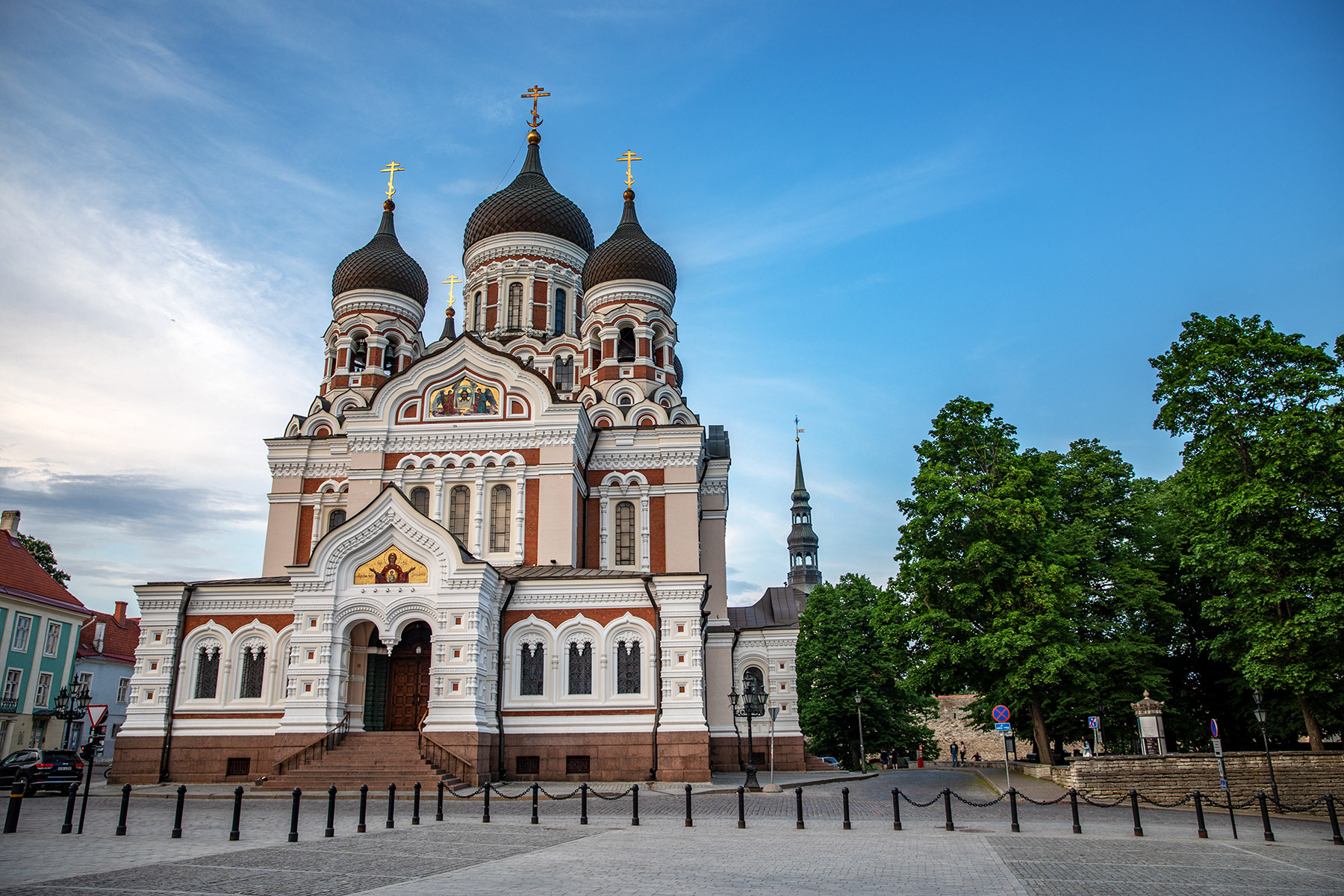
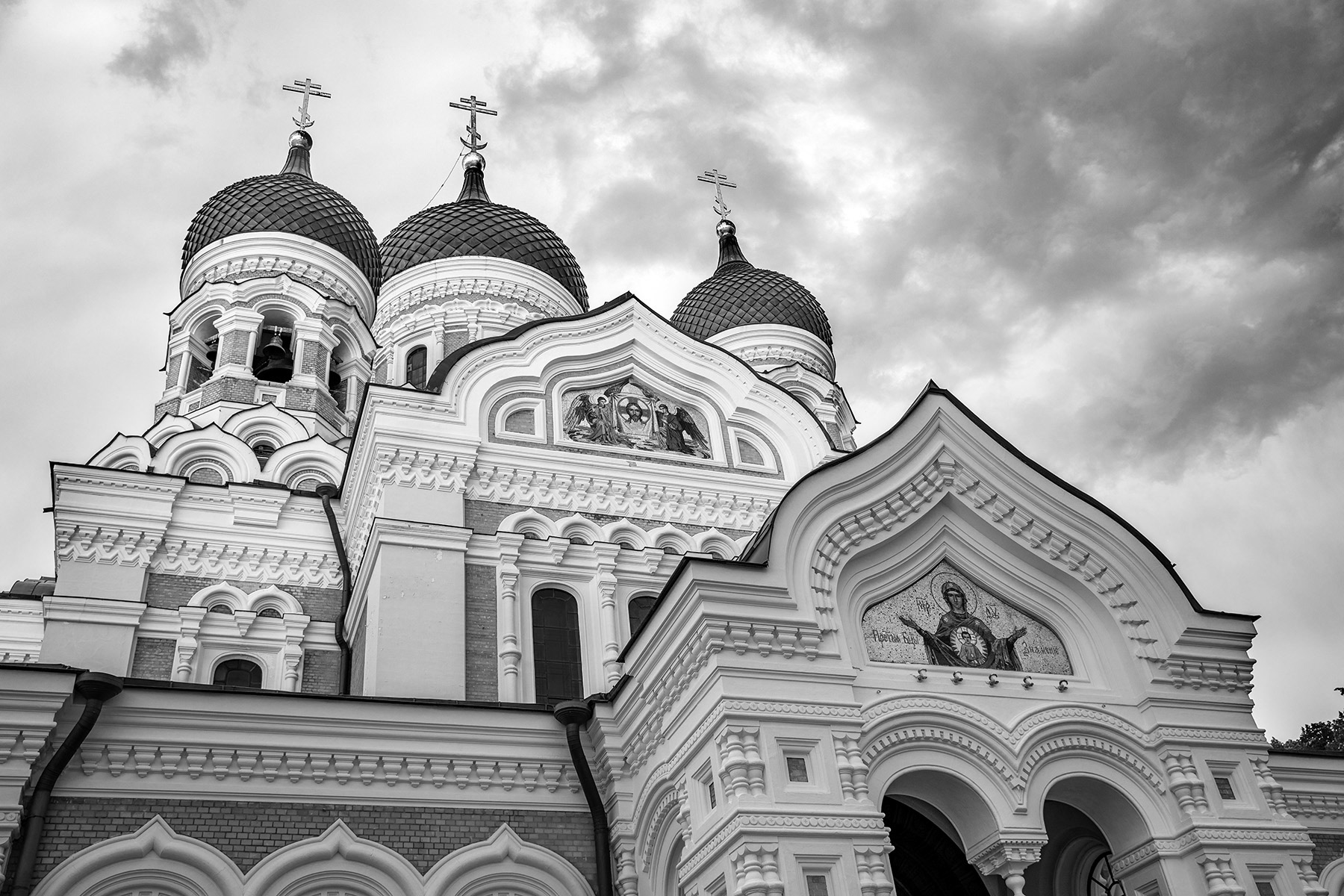
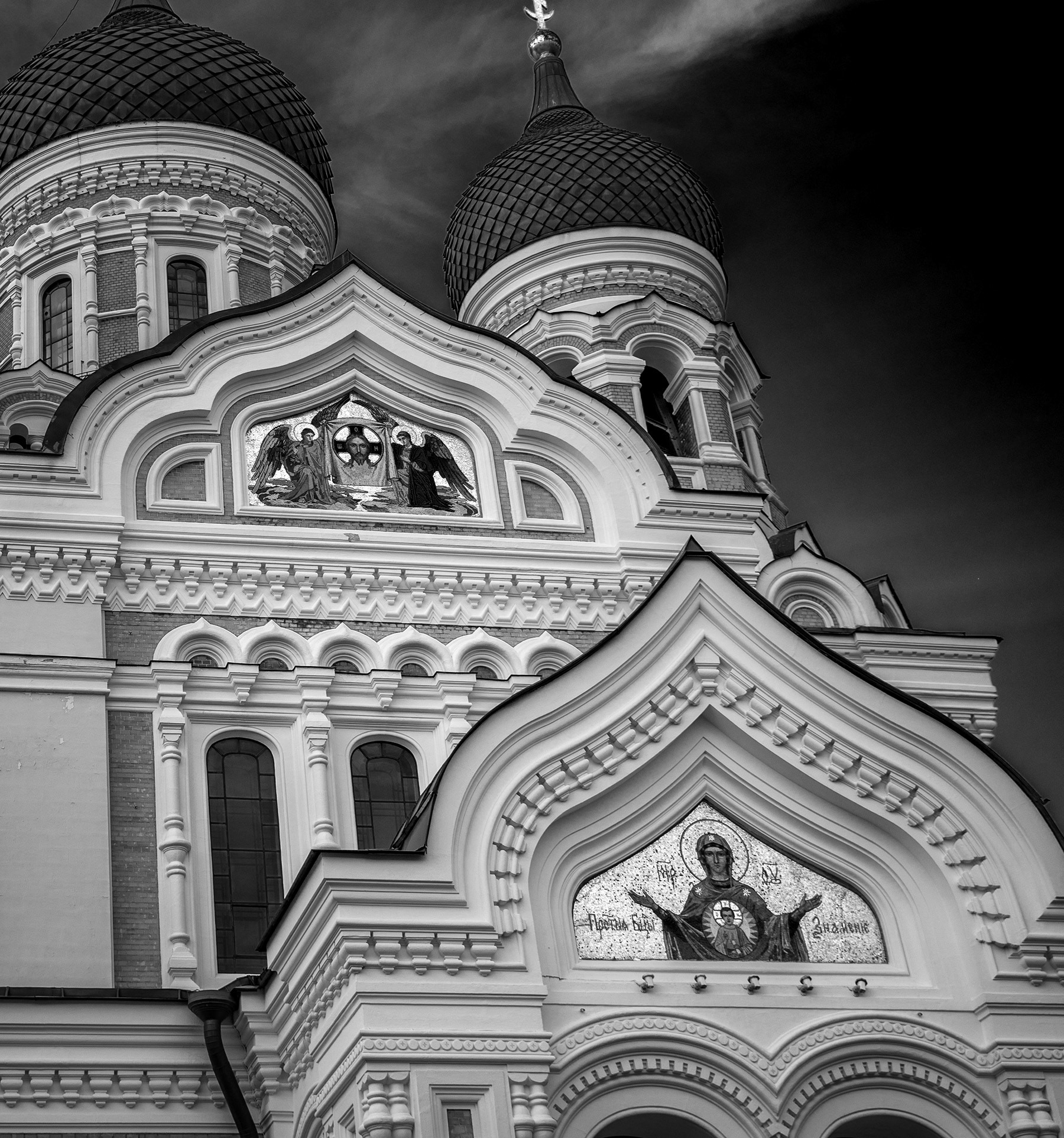
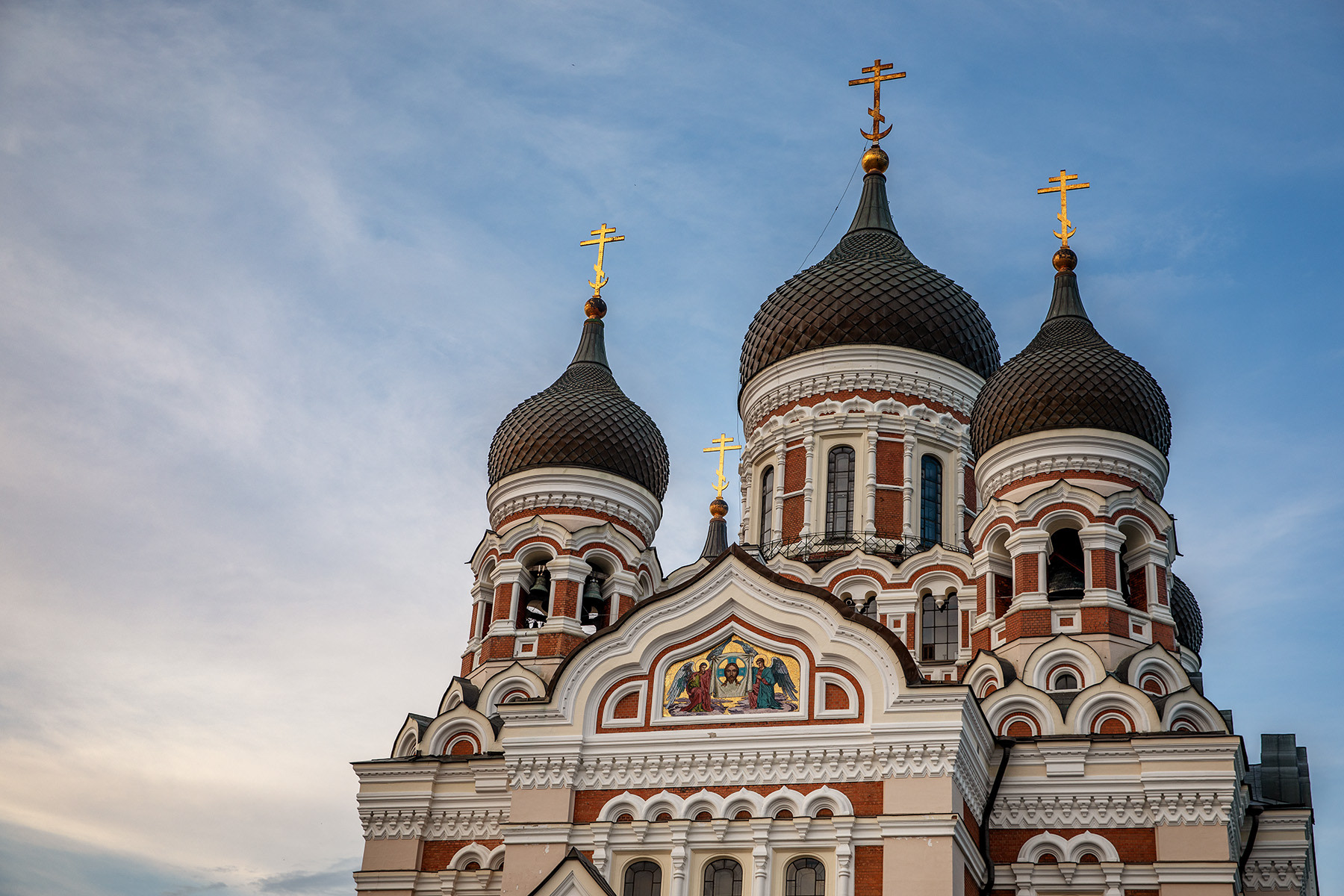
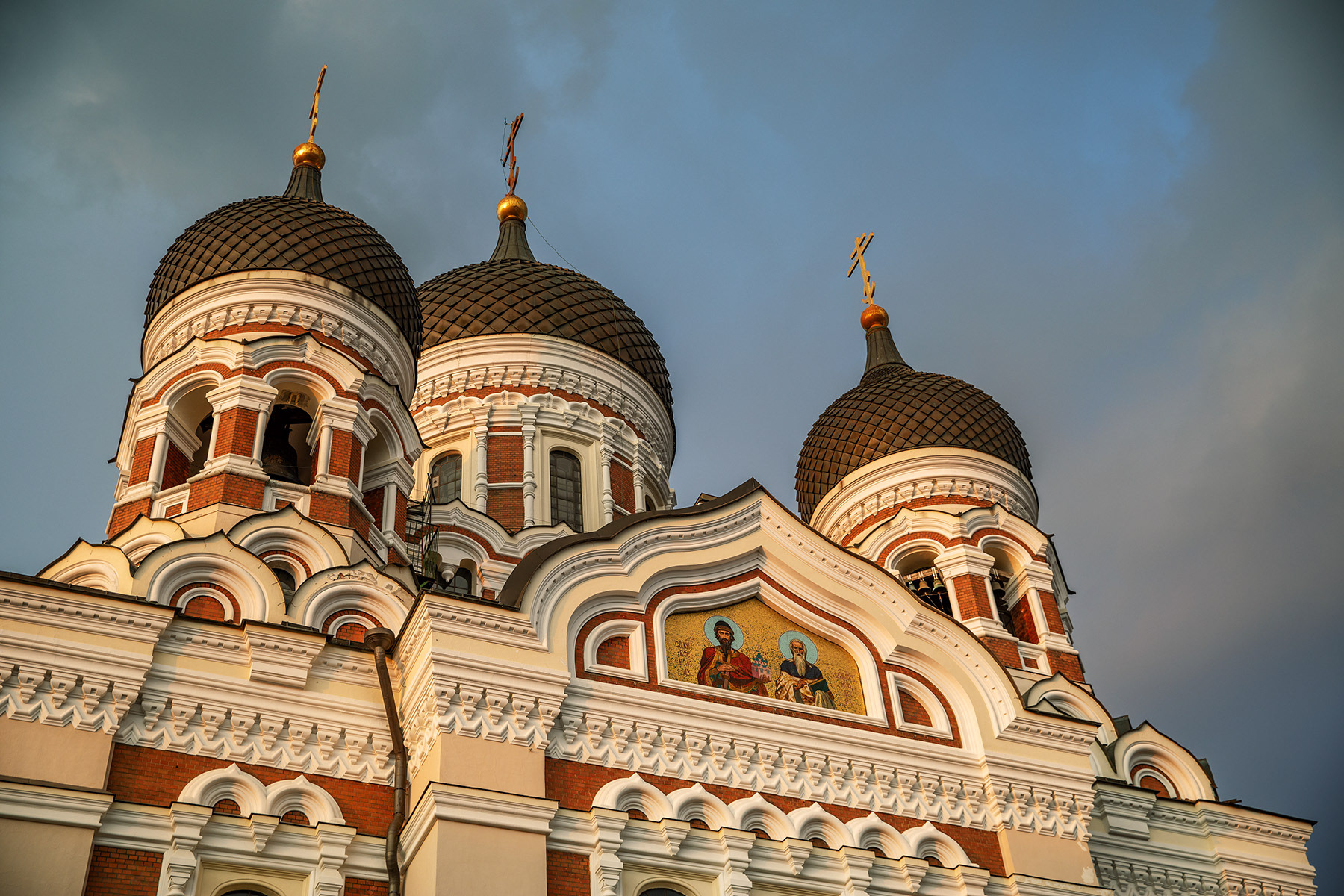

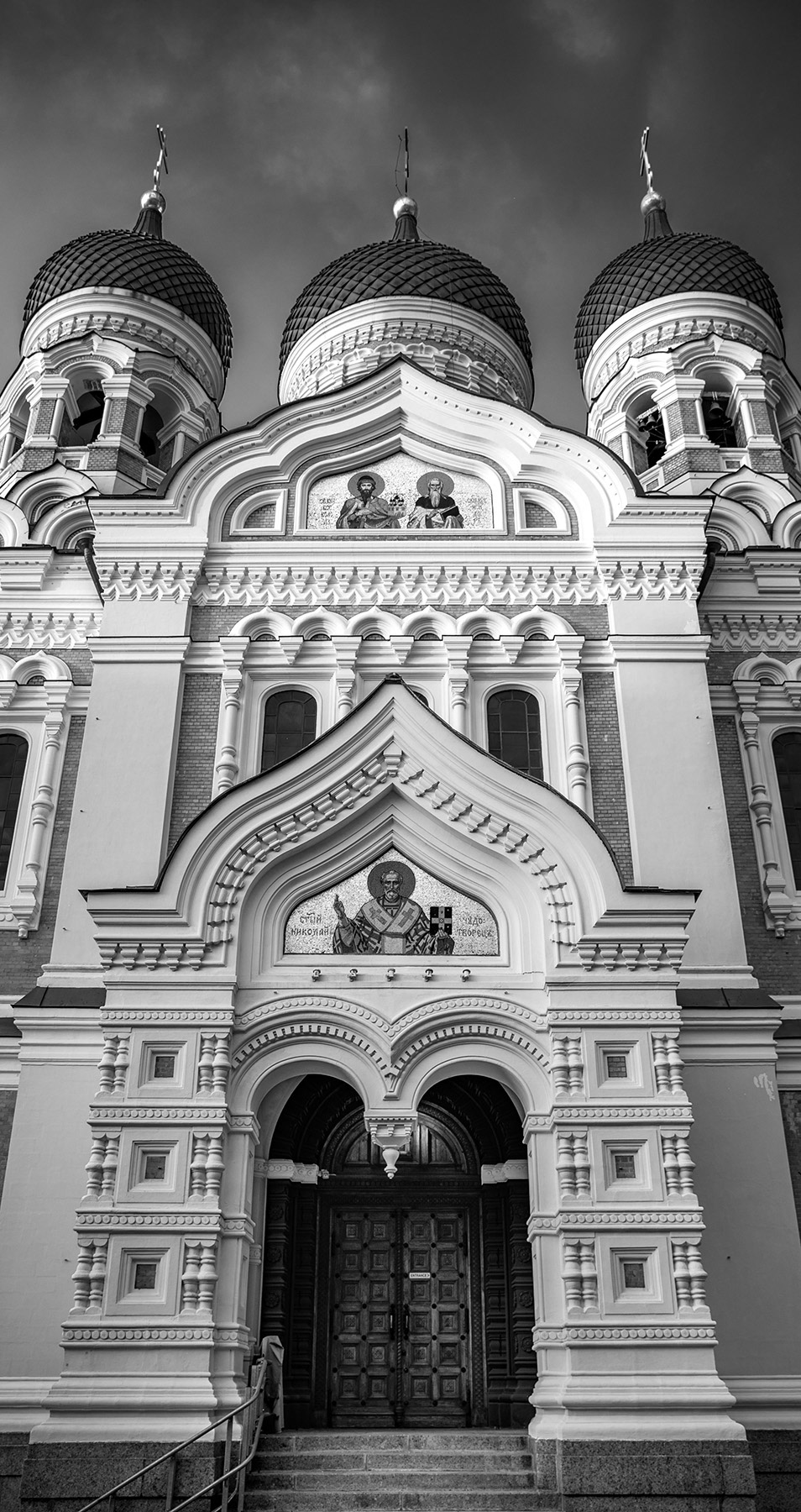
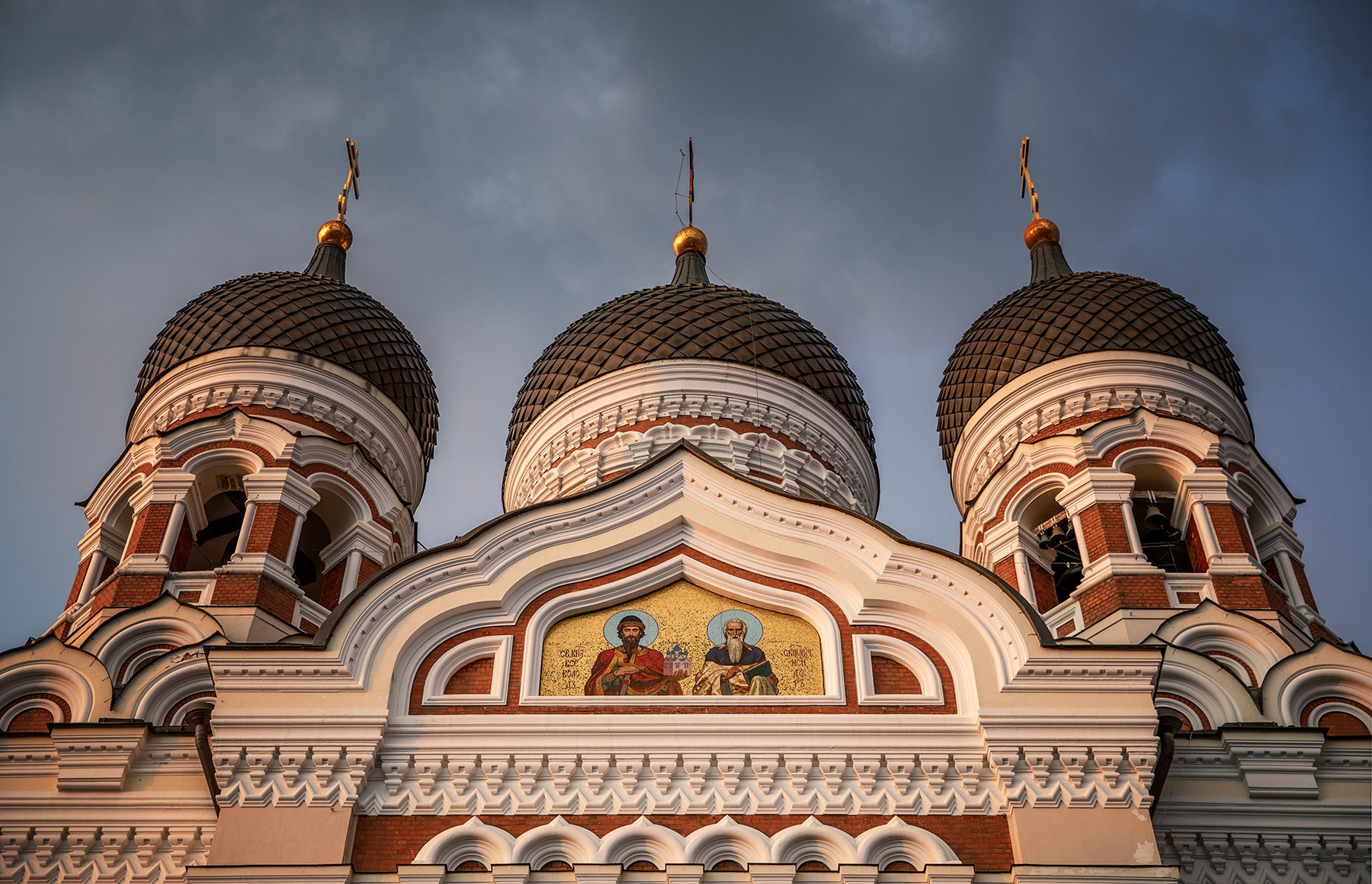
It's upsetting that so much about Estonia comes back to Russia.
In my experience, there isn’t a larger symbol of Russian presence in Tallinn than the Russian Orthodox church. It’s prominence in stature, design, and location at the top of the hill in old town Tallinn towers over the capital city. While there are other symbols (Soviet buildings and architecture, the thousands of Ethnic Russians living in Estonia), the moment we walked inside this church on a cloudy, cold October Sunday years ago, where everything was lit by candles that reflected the gold plated icons on the walls and ceiling and the priests chanted and Russians kissed their crosses while crossing their chests, I realized I was somewhere totally different.
Apparently (as I have not been to many European cities outside the Nordic region) Tallinn has one of the most well preserved medieval old towns in Europe. Founded by the Danes, Tallinn was a central port in the Hanseatic league, especially because of its strategic location in the Baltic Sea along the way to St. Petersburg. You see a lot of German influence in the old town and its a reminder that this place has always been governed/controlled/owned by somebody else (Swedes spent a lot of time here too). As far as I can tell, Estonia has only had just over 40 years of independence in its entire history (about twenty between WWI and WWII and the last 23 years since the Soviets left in 1991). So how do you create a national identity when you’ve rarely been a nation? How do you collectively organize a society when it’s been a trading and conquering melting pot for centuries? I think it begins with your own land and language, which Estonians have. Also, they have a reason to be here and for others to come to them. Estonians realize they can’t do it alone and have proactively reached out to the West while developing ways to be active in the region.

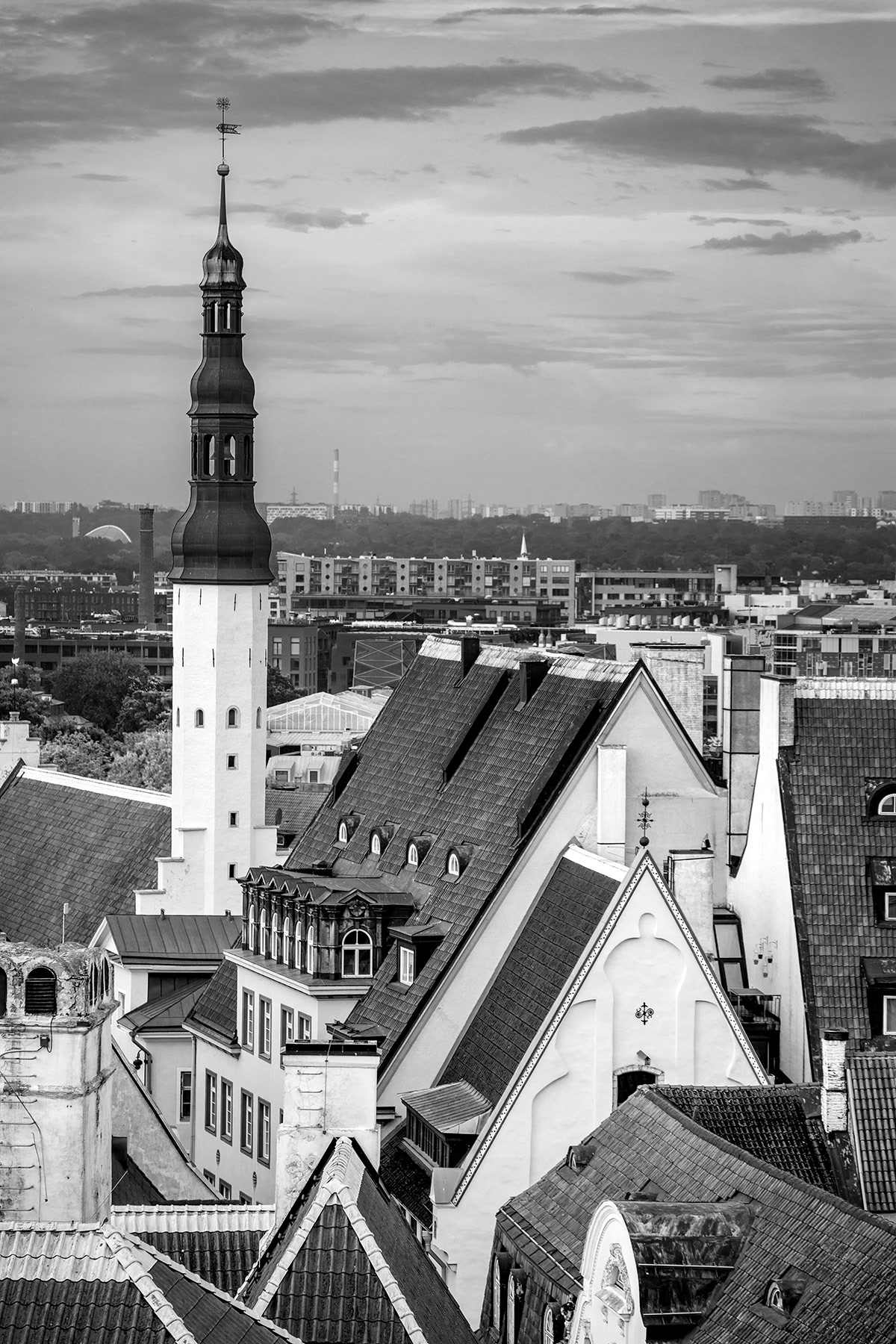
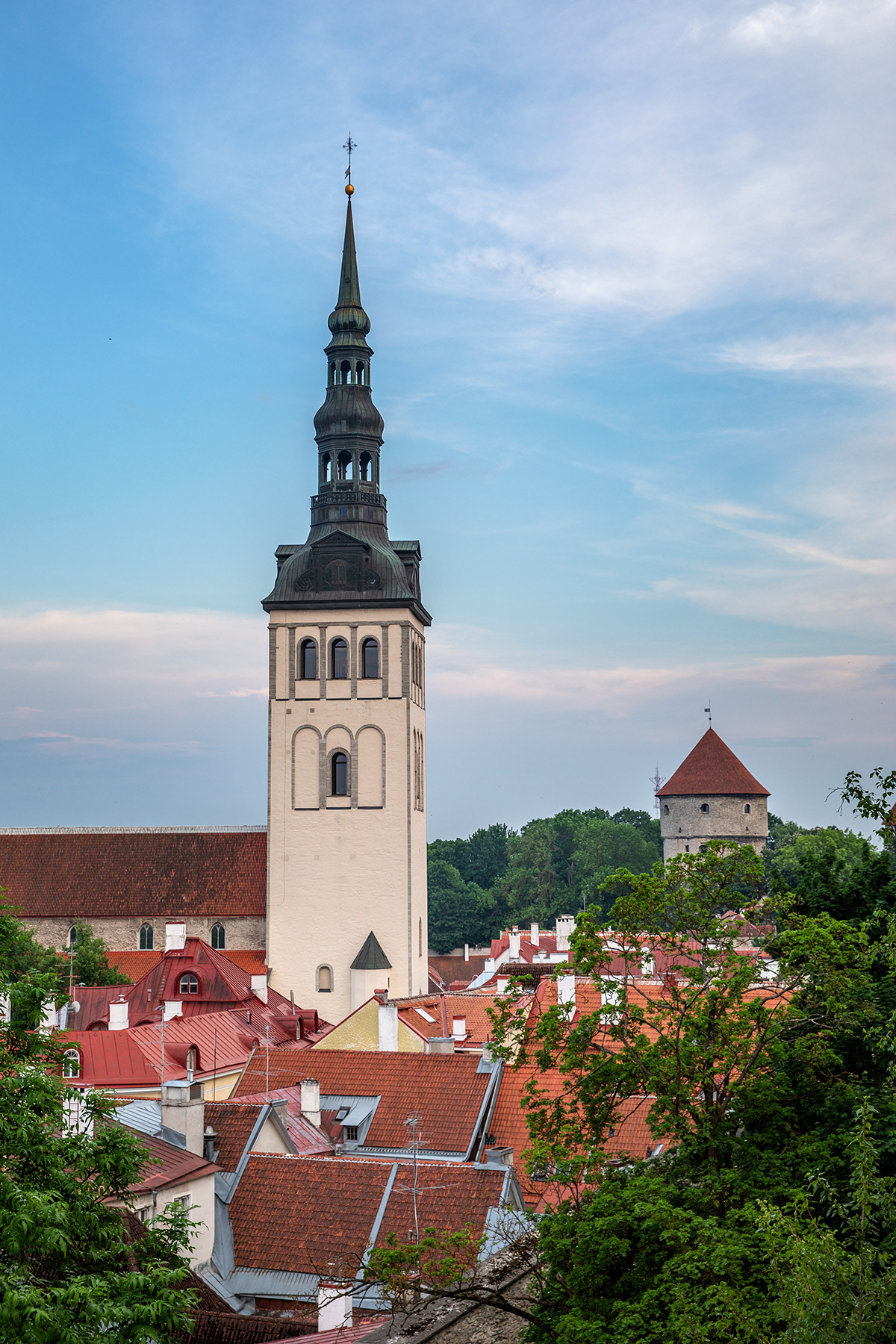
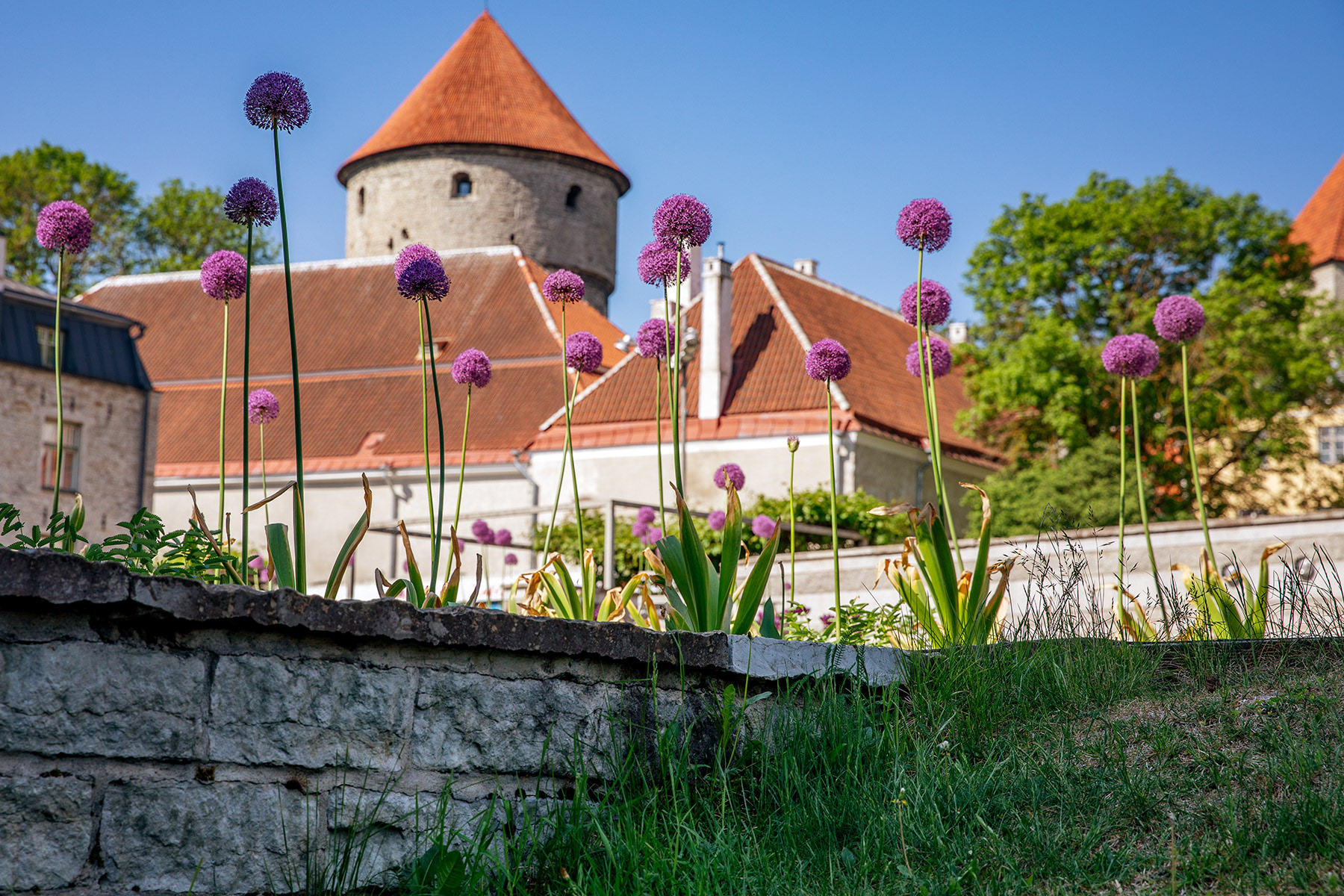
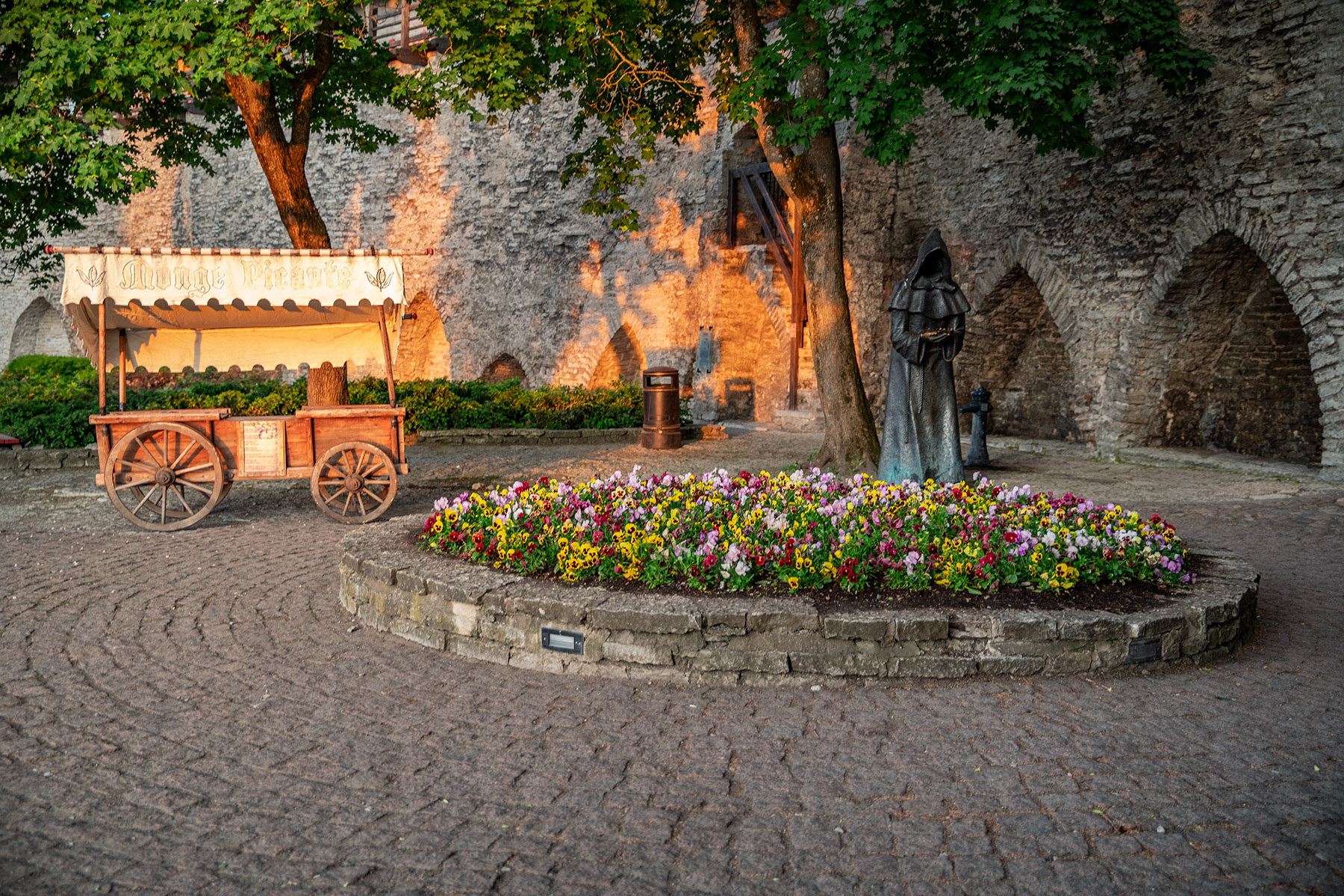
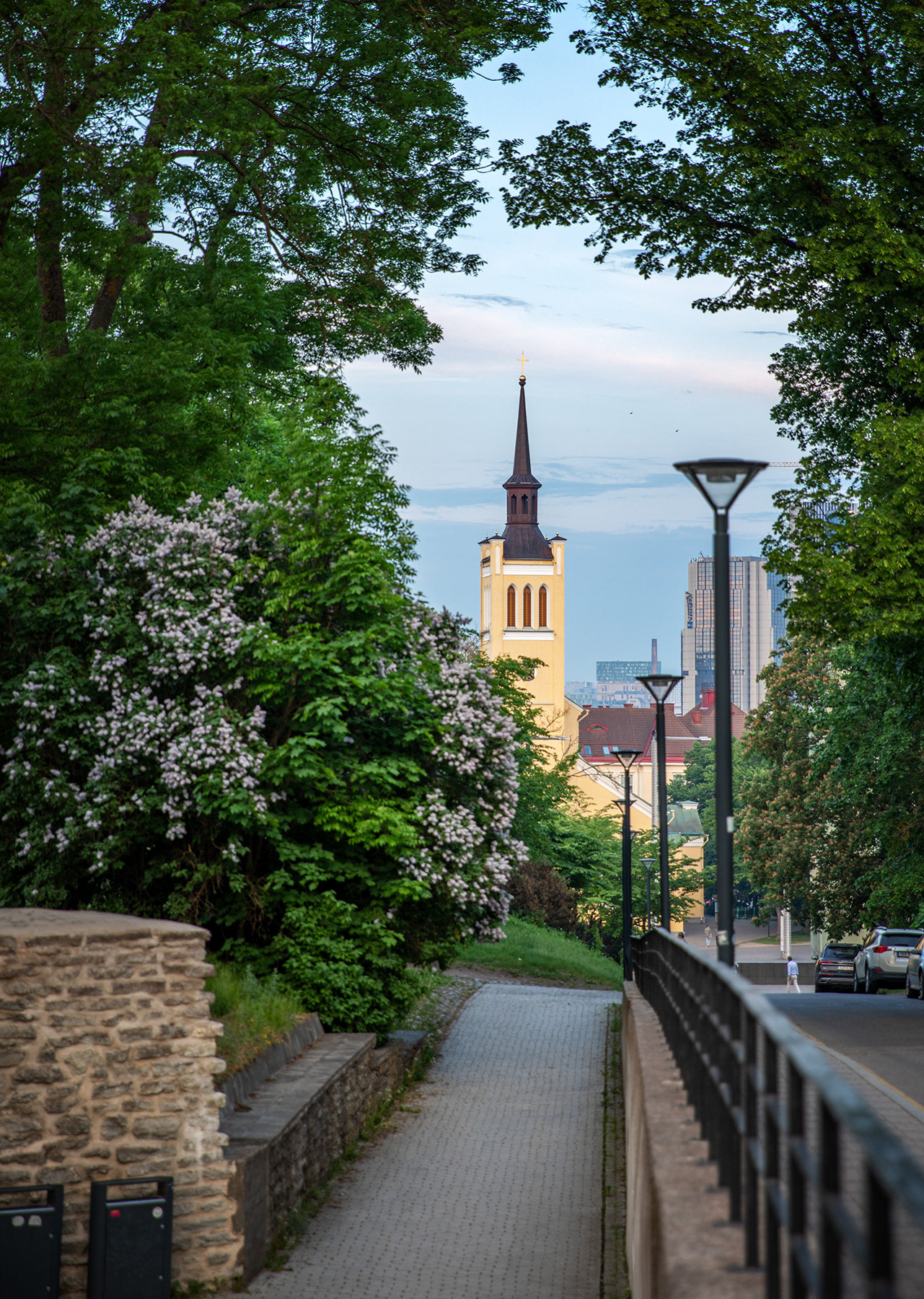
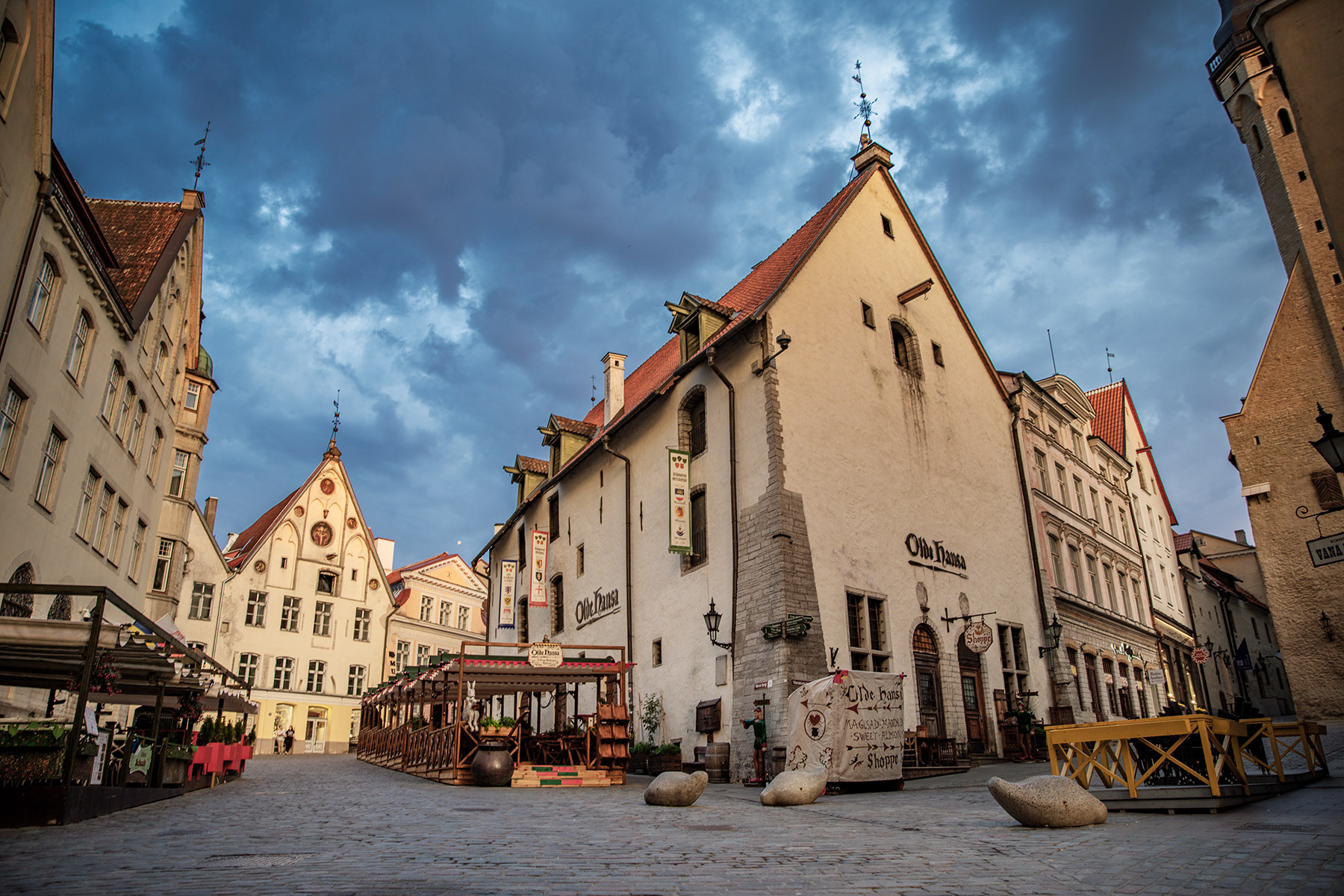
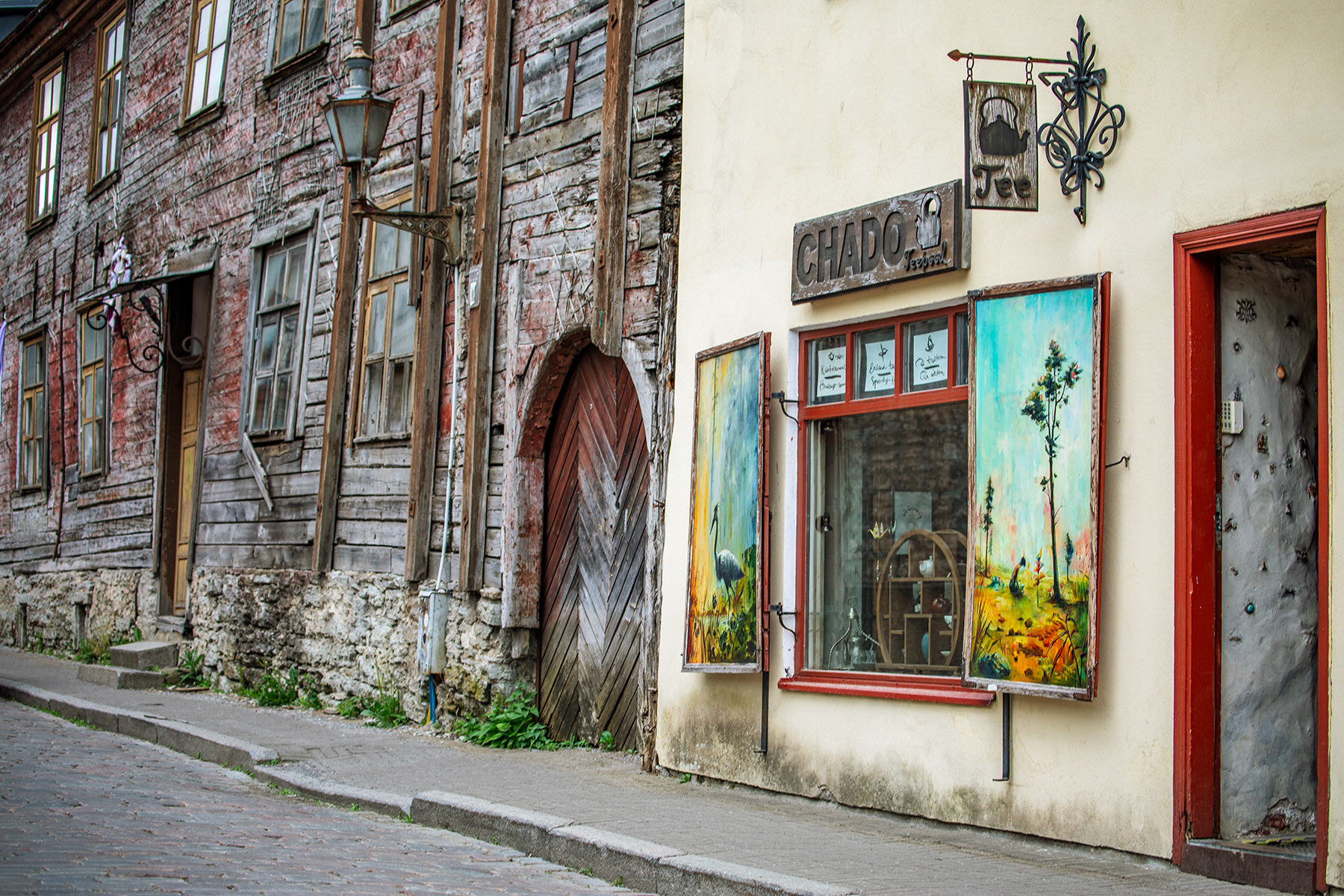
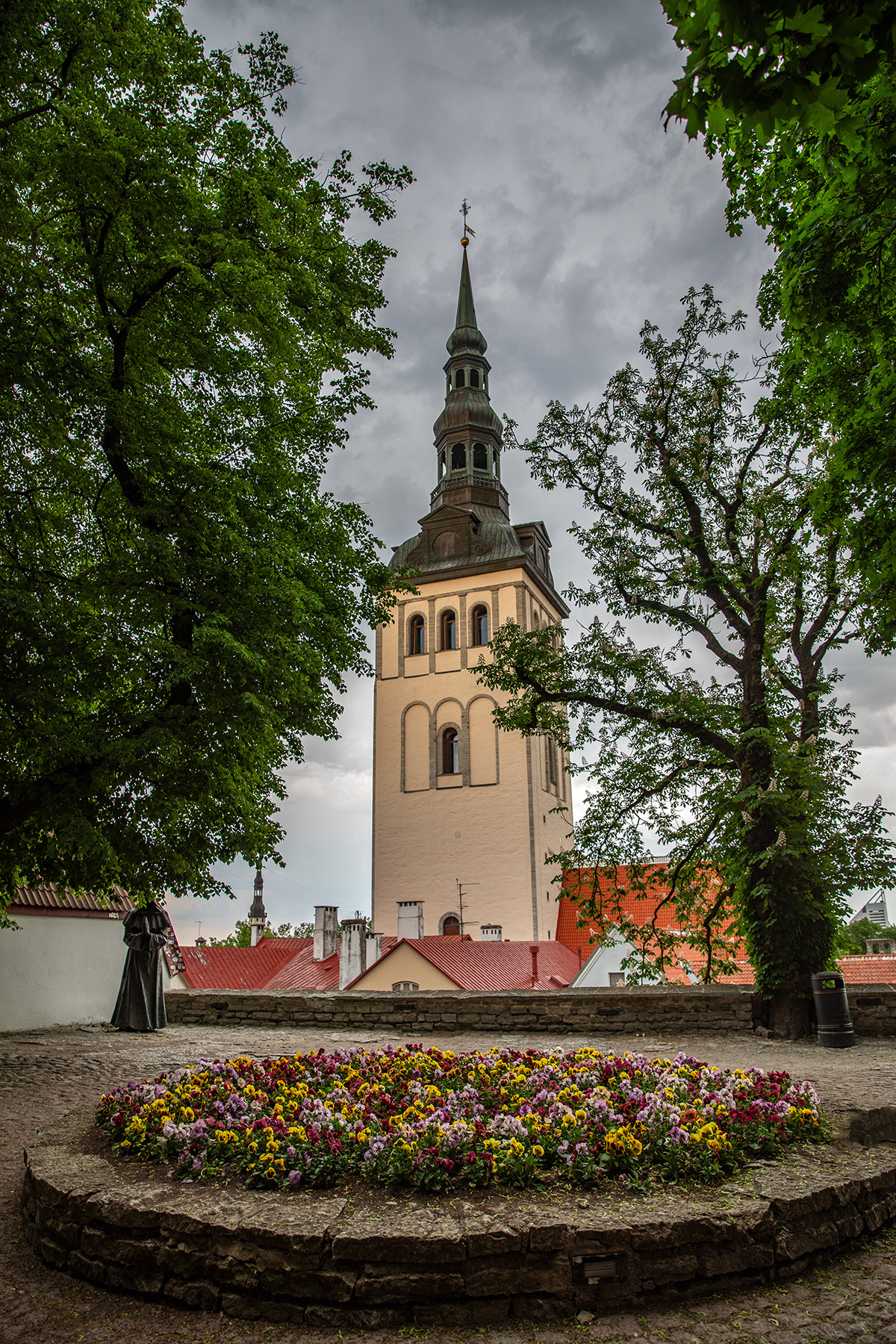
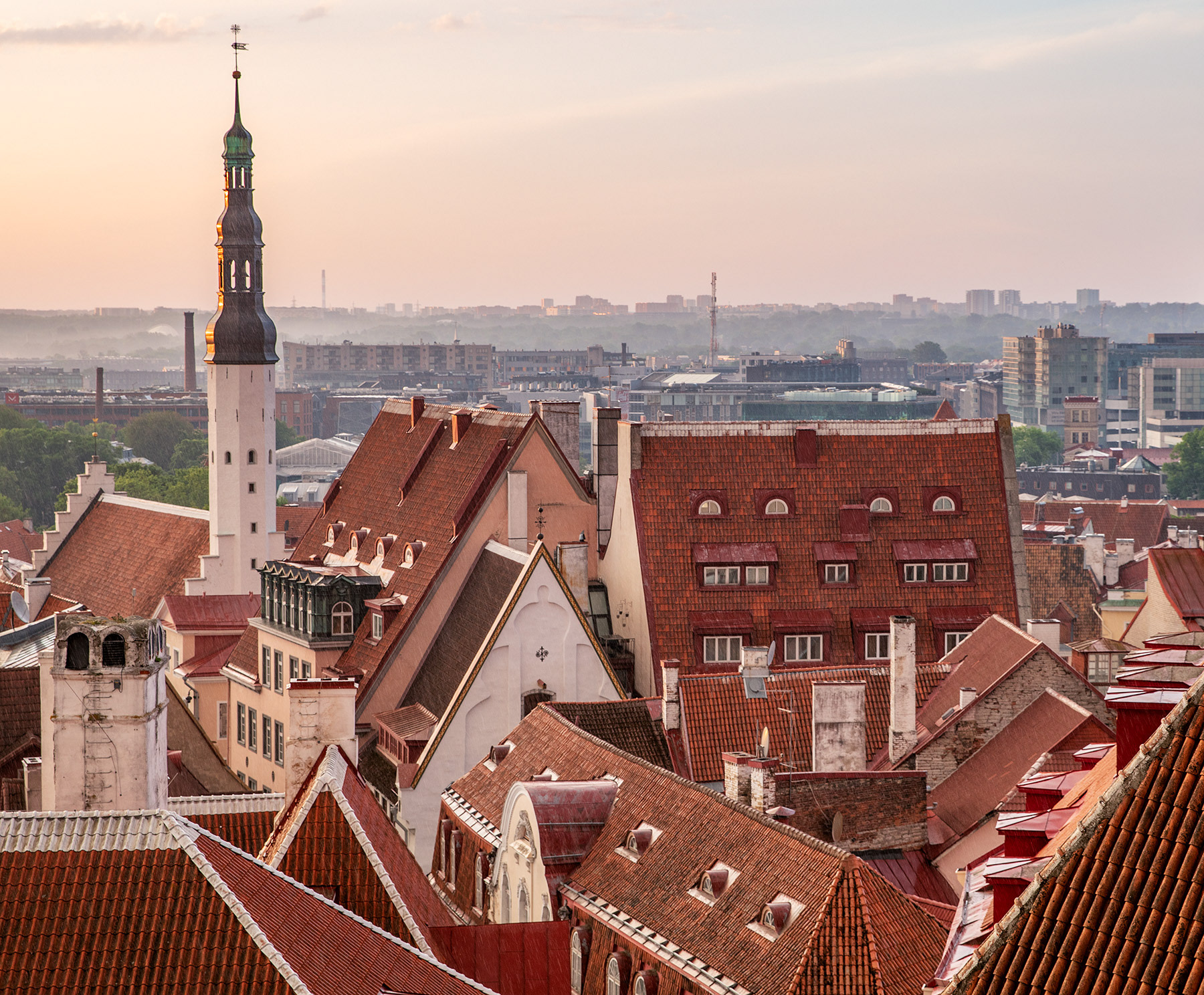
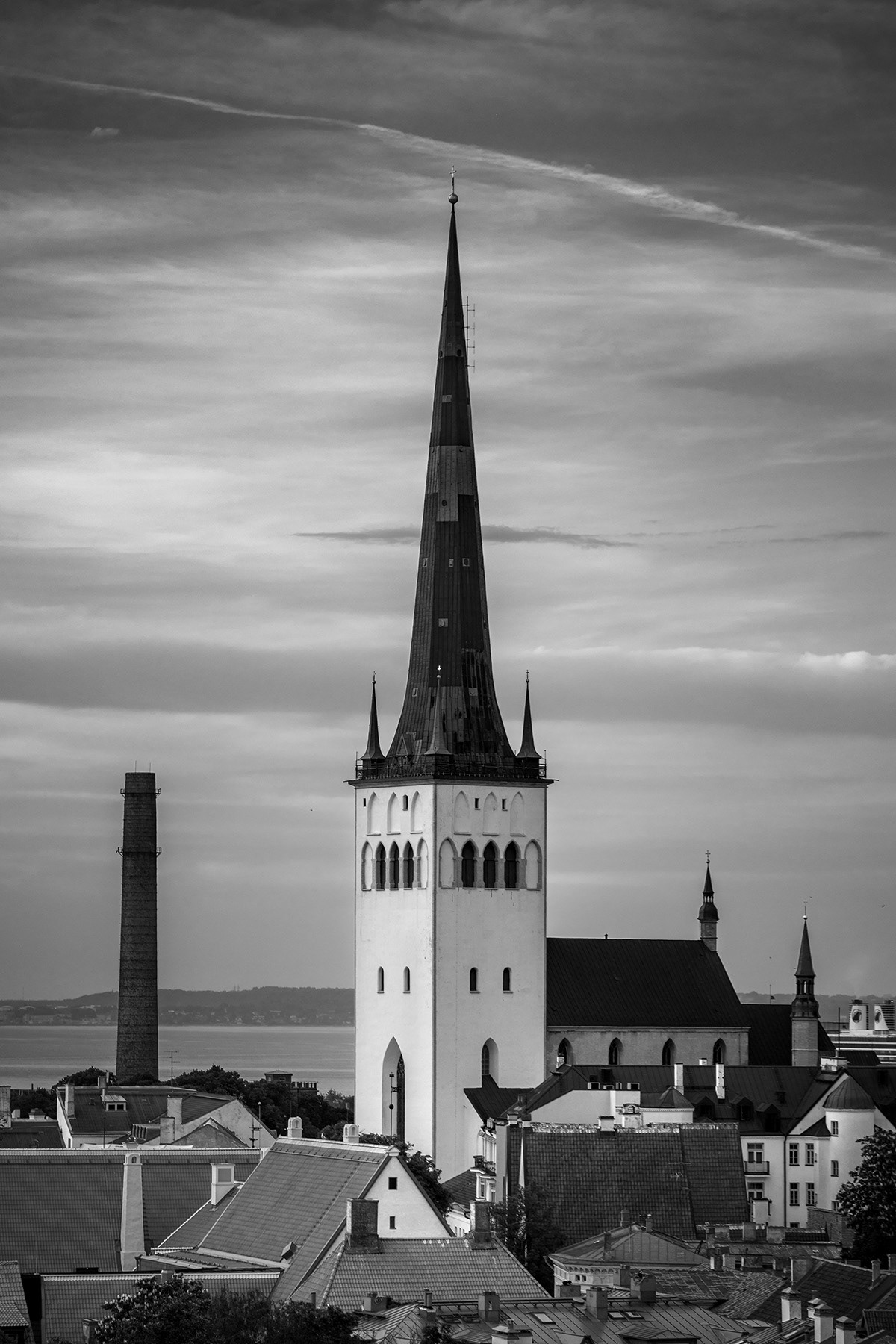
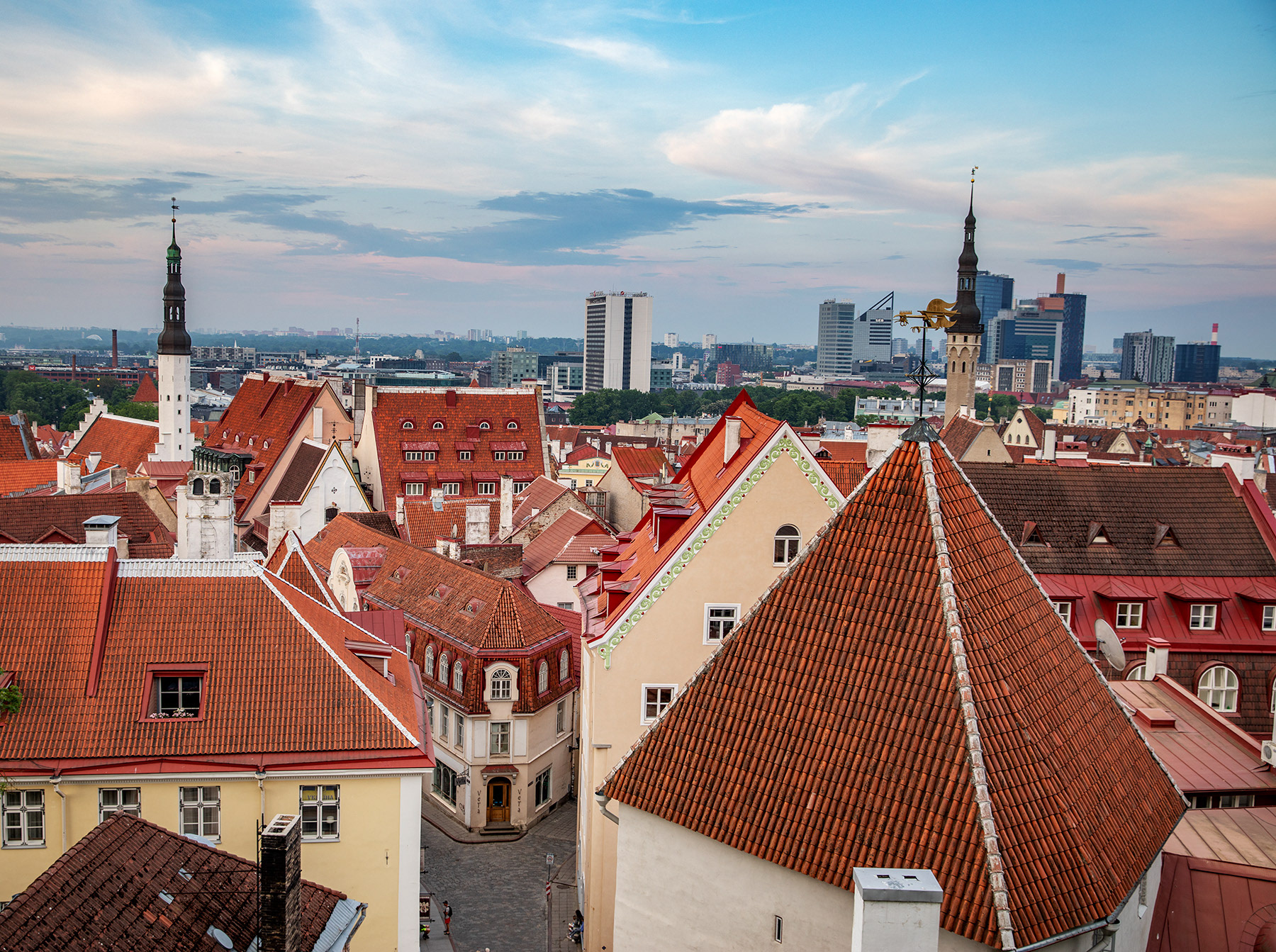
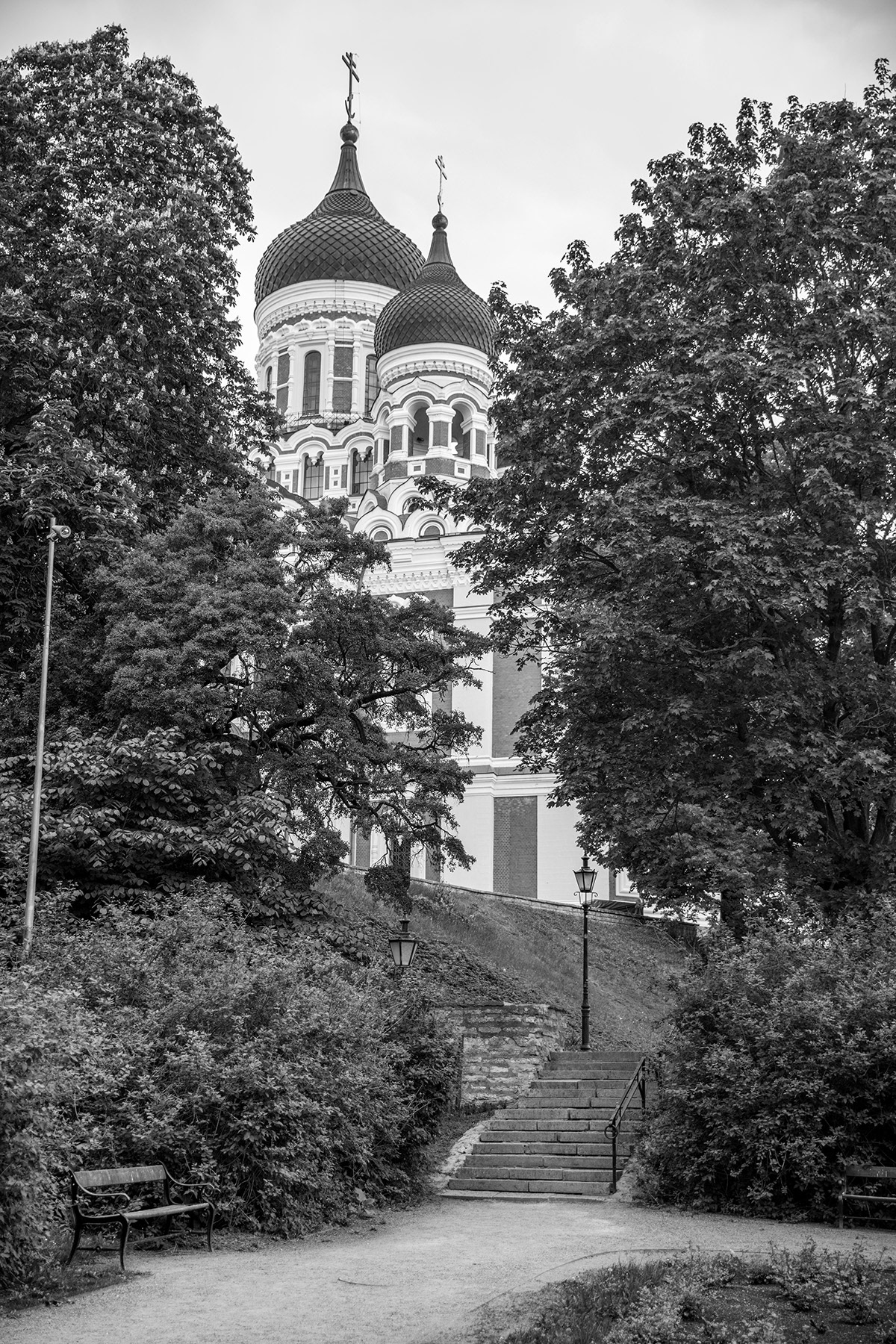
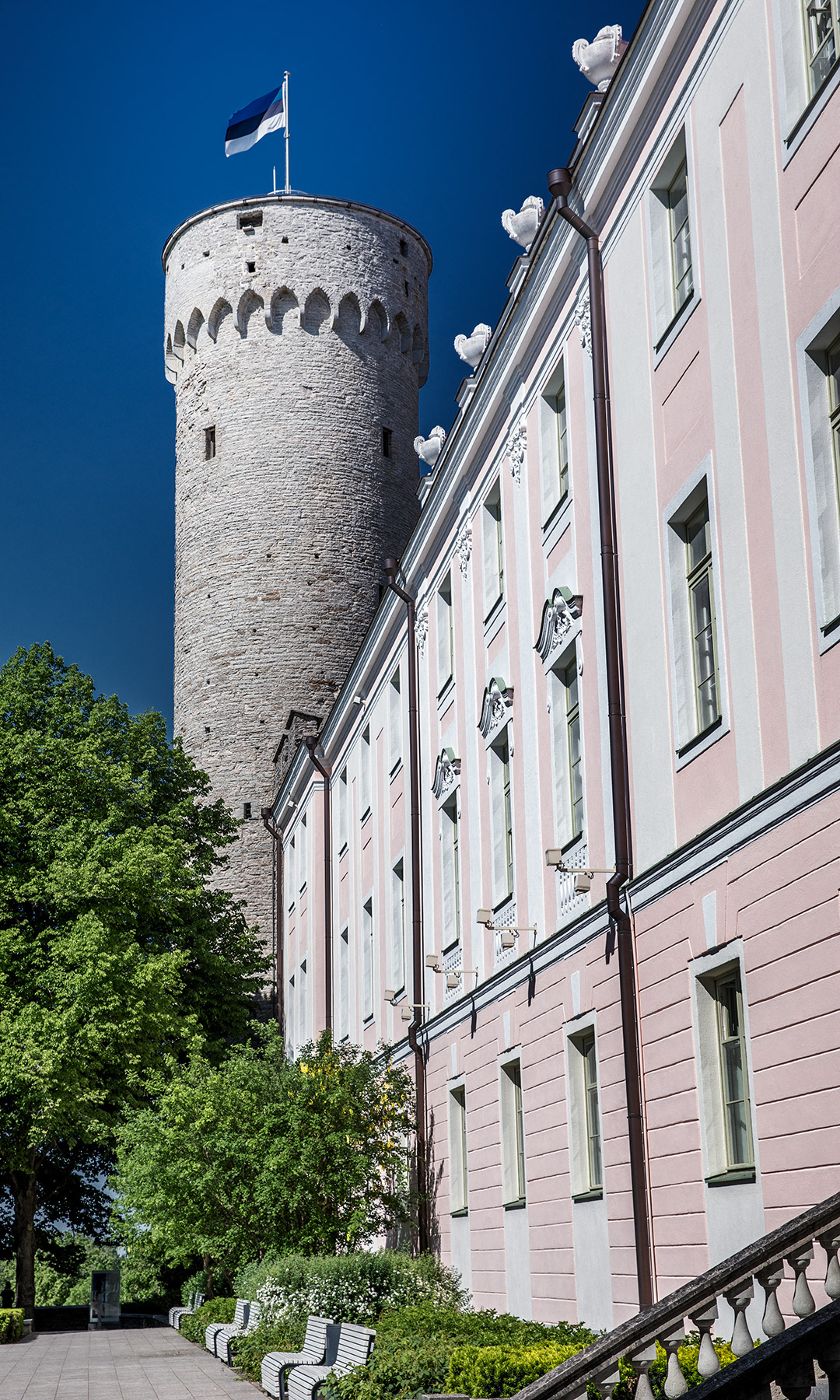
Getting out of the old town and into the real city of Tallinn is essential. I think I was especially affected my first time here by the city eroding because what I see in the American West is not just cities disappearing, but the life stories drifting away. I’ll never forget the wooden homes in Tallinn that were once obviously beautiful and loved, but then they were slowly decaying. It seemed the Soviets only cared about building their shitty, functionalist buildings while letting the rest crumble. It seemed blatantly symbolic for allowing society die slowly along with their homes.
I looked forward to seeing what had become of the buildings, both Estonian and Soviet. As it turns out, it’s all still there. While I had assumed the Soviet’s buildings would be demolished and buried to be replaced by something that could bring love and pride to the city, that’s not necessarily the case. Being a pragmatic people, in most cases the government has subsidized the renovation of Soviet era structures to make them energy efficient and more livable. In other cases, Estonians have reclaimed industrial yards and made them into something inspiring, like Telliskivi Creative City. Reclaiming a former industrial complex, Telliskivi has become home to galleries, museums, creative agencies, start ups, restaurants and breweries. And that’s the exciting part of where Estonia is now - they’re not only reclaiming buildings, but also their intellect. Tallinn is rapidly rising up and joining its neighbors Helsinki and Stockholm in the lead rankings of innovative tech. Estonia created an E-government for their citizens and that has attracted international business and techies. That’s one thing such a small country can give to the larger world. For the time being its a safe place with an educated population that wants to make change. And to take it one step further, the Estonians I’ve interacted own their personal heritage on their chest but have a deep desire to connect and engage beyond their borders, especially to the West. It’s inspiring in this period of time in the world where populism and nationalism are on the rise to see a people looking outward rather than contracting inward.
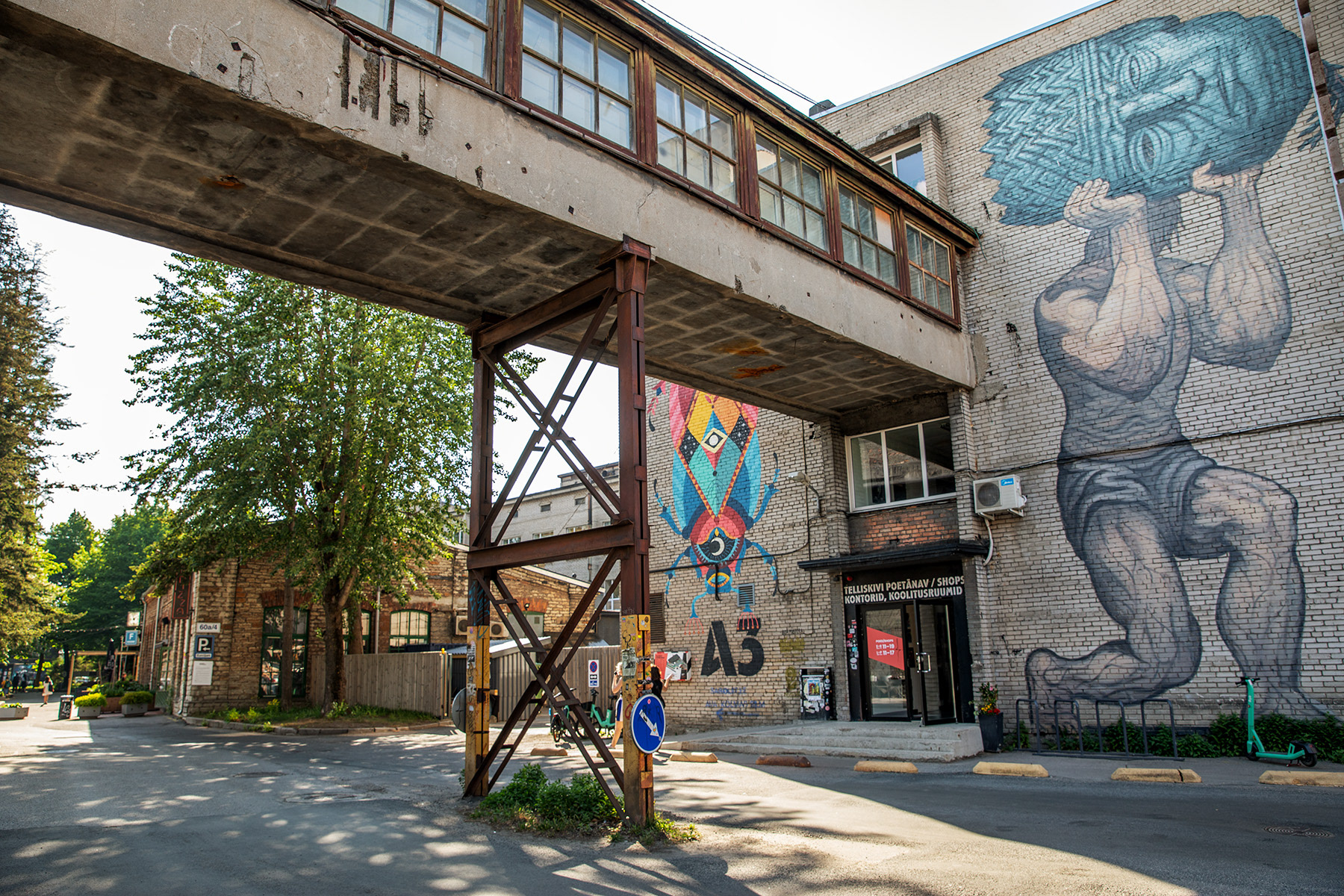
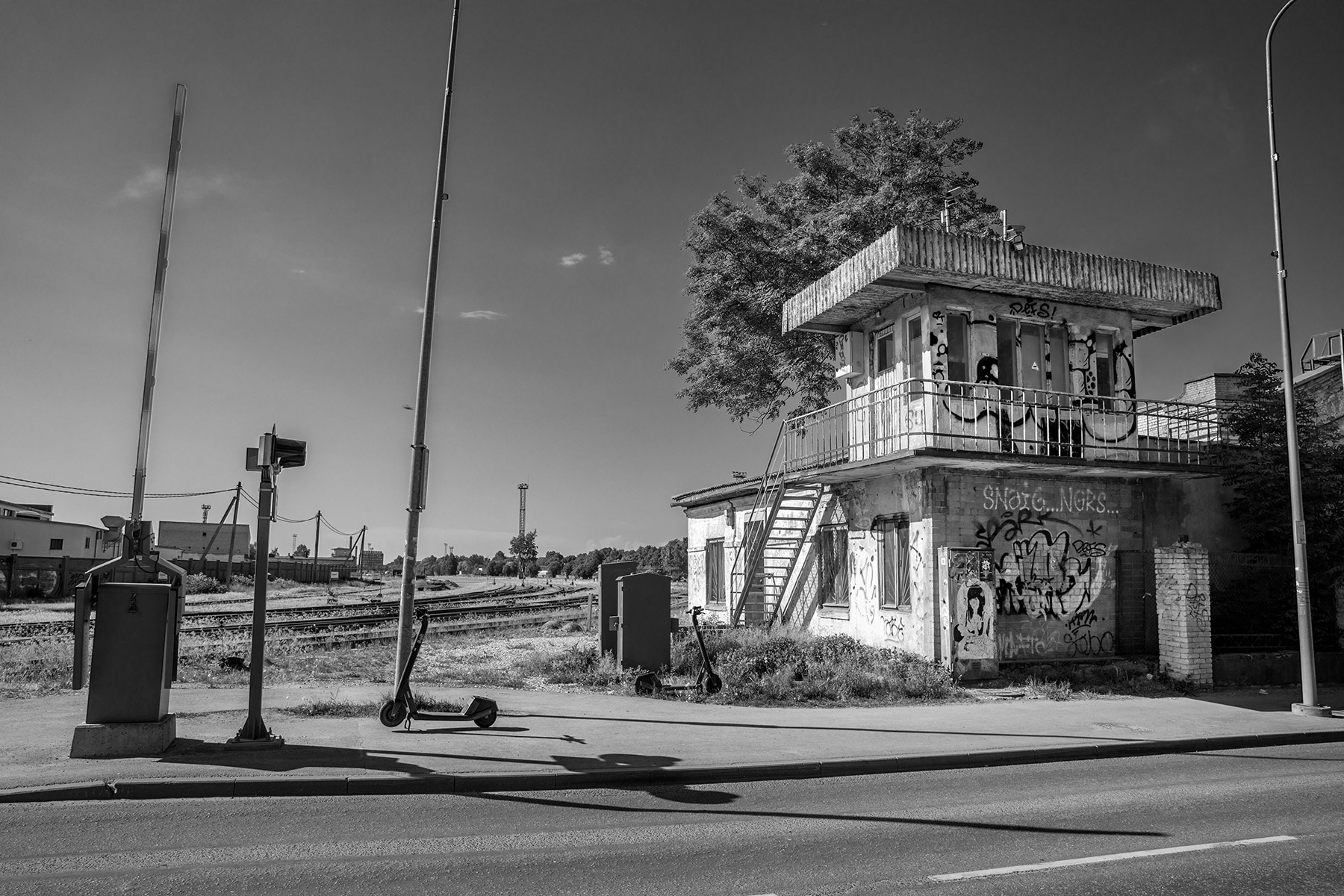
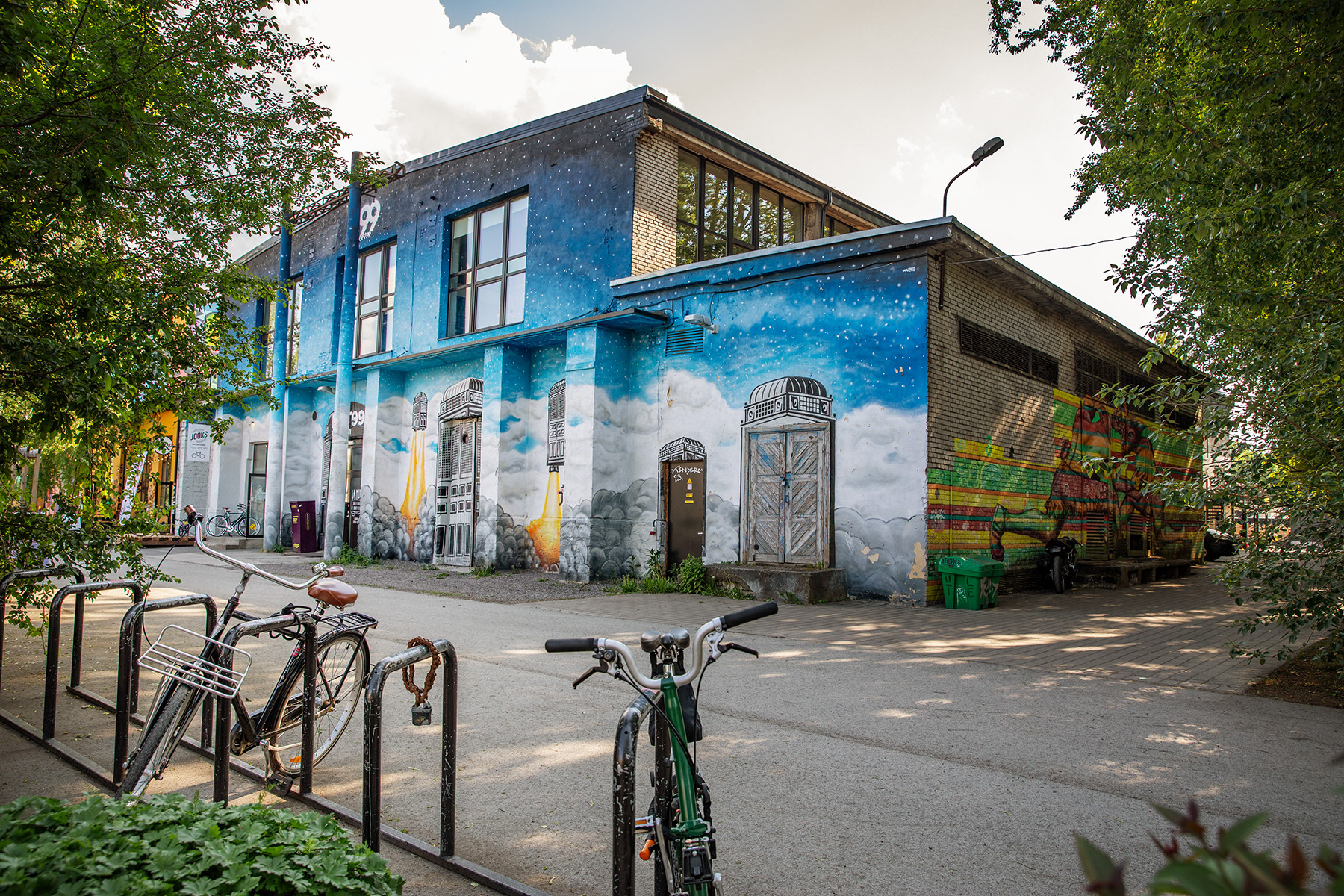
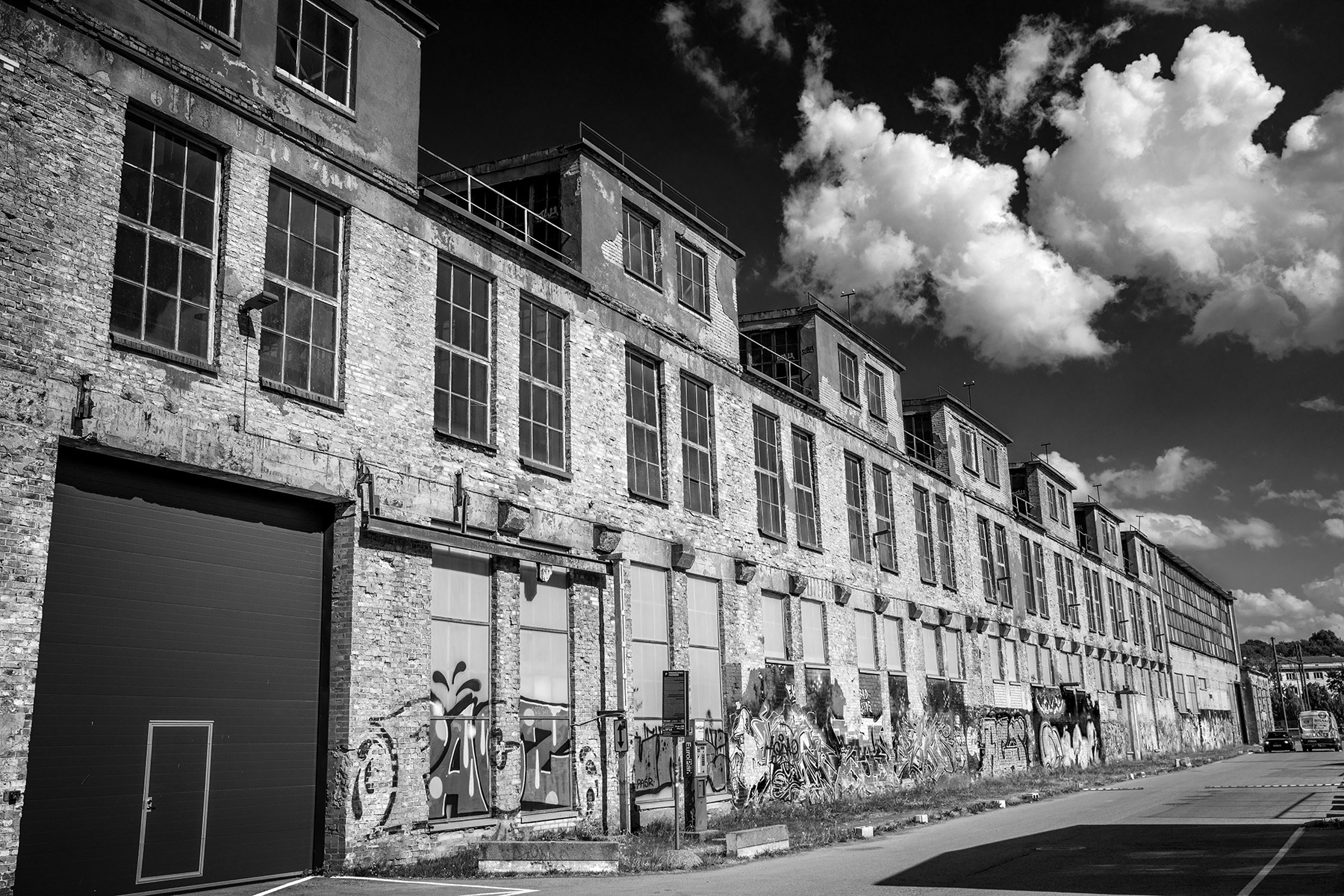
These were the buildings I specifically remember and wondered what had become of them. If my memory serves me correctly after two decades, the tall tower in the right of the photo was drab and prominently visible from the gate of the old town. Likewise, the multi-story buildings below are other Soviet era architecture I recall as being dull, green, and sad. But rather than being torn down, it looks like they’ve been remodeled and upgraded - made modern rather than destroyed. The buildings on the horizon in this photo are how much of the suburbs in Tallinn appear - miles of multi-story, functionalist (at best), and Russian built. As Estonians start modernizing in the core of Tallin, there’s miles upon miles of the country to reclaim as what Estonia wants to become.
While a primary purpose of my trip to Tallin was to see what I had seen before, I wanted to see something new. Growing up in Idaho, I understand that the big city doesn’t represent the whole place, so I wanted to see the Estonian countryside. I found a guide who does tours east to Narva, an industrial city on the Russian border. And as everything comes back to Russia here, I felt like I had to go gaze across the river at the big bear and maybe flip the bird at Putin.
My guide Juhon worked for years for the Estonian Department of Tourism and now works for Department of Finance. But he loves his country and missed showing people around, so he does this gig for fun because he cares and wants people to love the place too. We left Tallinn early in the morning, drove through sprawling suburbs of Soviet multi-story housing and into rolling fields of forest and farmland. The landscape reminded me of rural Alabama, with its farm fields in the lower flats and forests covering the humps of hills that rolled over the landscape like a bed sheet being tossed. We stopped at an old Danish castle where school kids were on a field trip and then drove up to the shore of the Baltic Sea to see the highest waterfall in Estonia (about 100 feet). I found the geology fascinating as I had been reading Annals of a Former World by John McPhee on this trip, and the fault line that separates sea from the Estonian shoreline is dramatic here. Then we drove further east, and things got interesting.
Sillamäe felt like the anti-Chernobyl. A Soviet ghost town preserved, not destroyed, yet still bizarre and haunting. In the early years of the Soviet occupation of Estonia (1950’s), Sillamäe became a processing plant for uranium, and because of secrecy and security, it also became a closed town. It was a blank spot on maps, and you could only enter with clearance. The Soviets shipped in their best scientists and best supplies. This town received amenities and goods that the rest of Estonia lacked. As you can see in the pictures, the Soviets put as much priority into making this place nice with elegant boulevards and plazas along the seashore as they did in allowing the rest of the country to disintegrate.
And people still live here. I saw what appeared to be a few retirees walking around with bags of groceries. A few cars passed slowly as we walked. You could see personal stuff like vases, curtains, and clutter in windows of buildings that confirmed they’re still lived in. Two young ladies, maybe in their early twenties, walked past us and Juhon said it was the first time he heard Estonian in this town in years. Other than that, maybe it was because of the time of day or day of the week, the place felt vacantly silent and odd, like passing through an abandoned industrial site in Nevada.
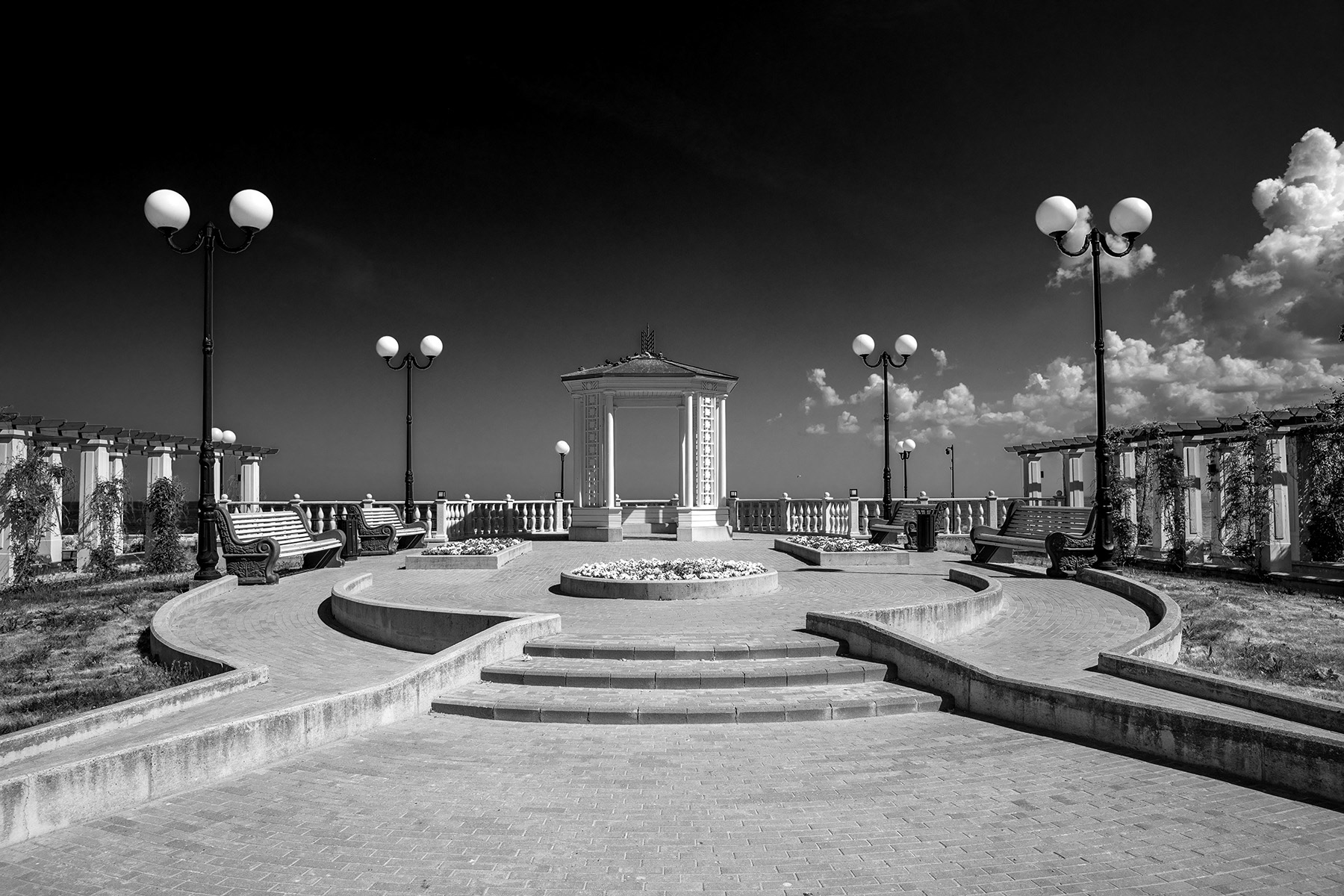
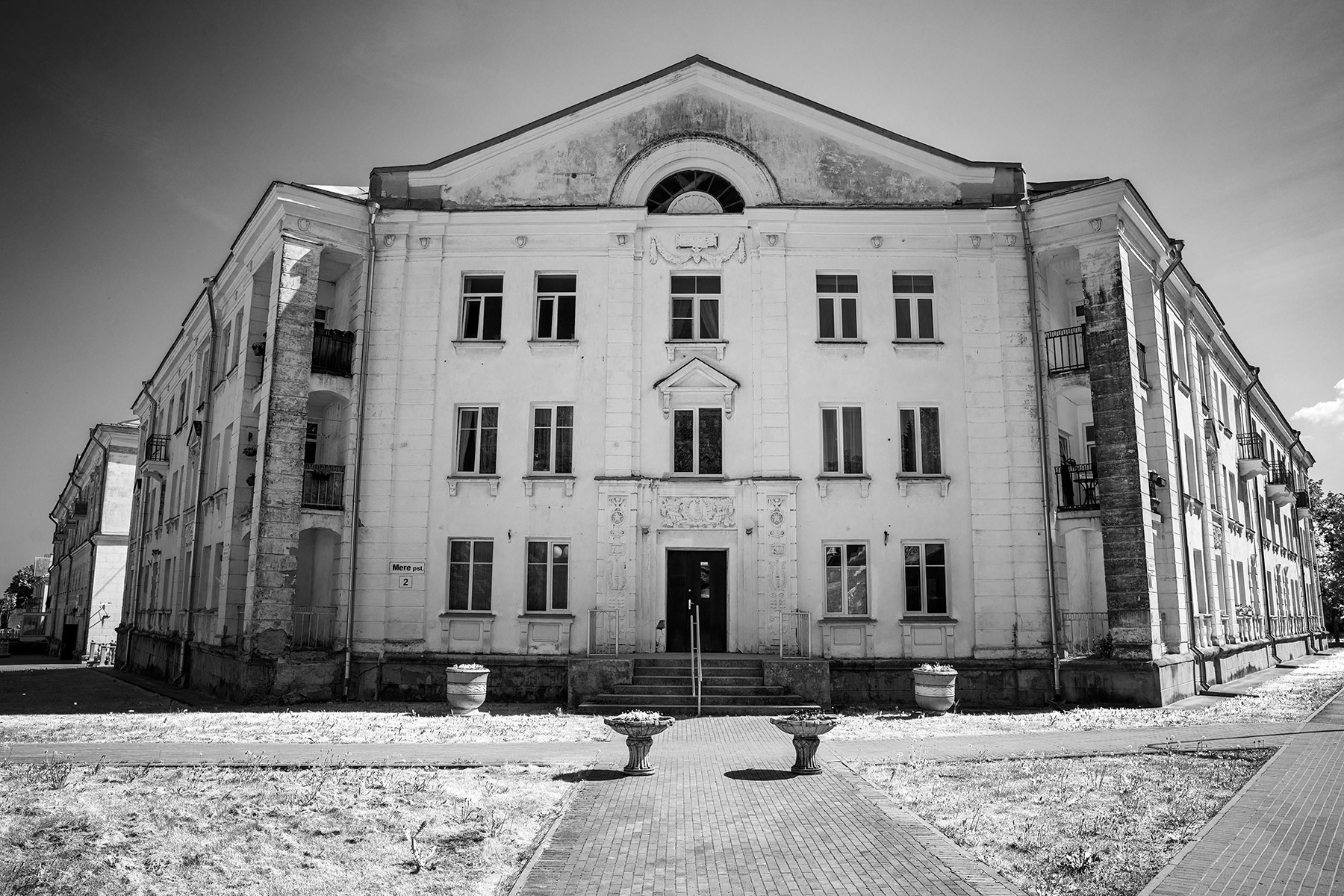
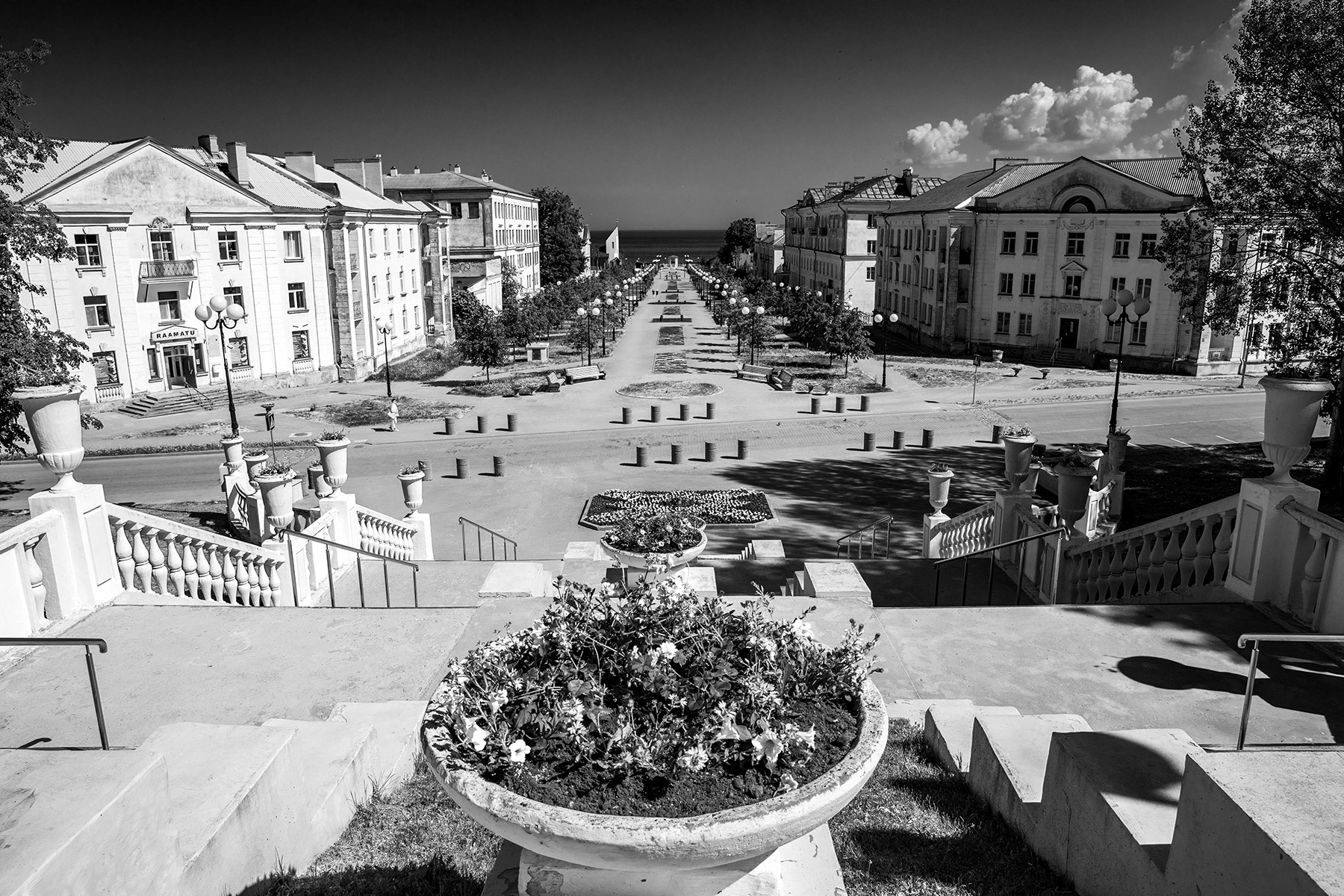
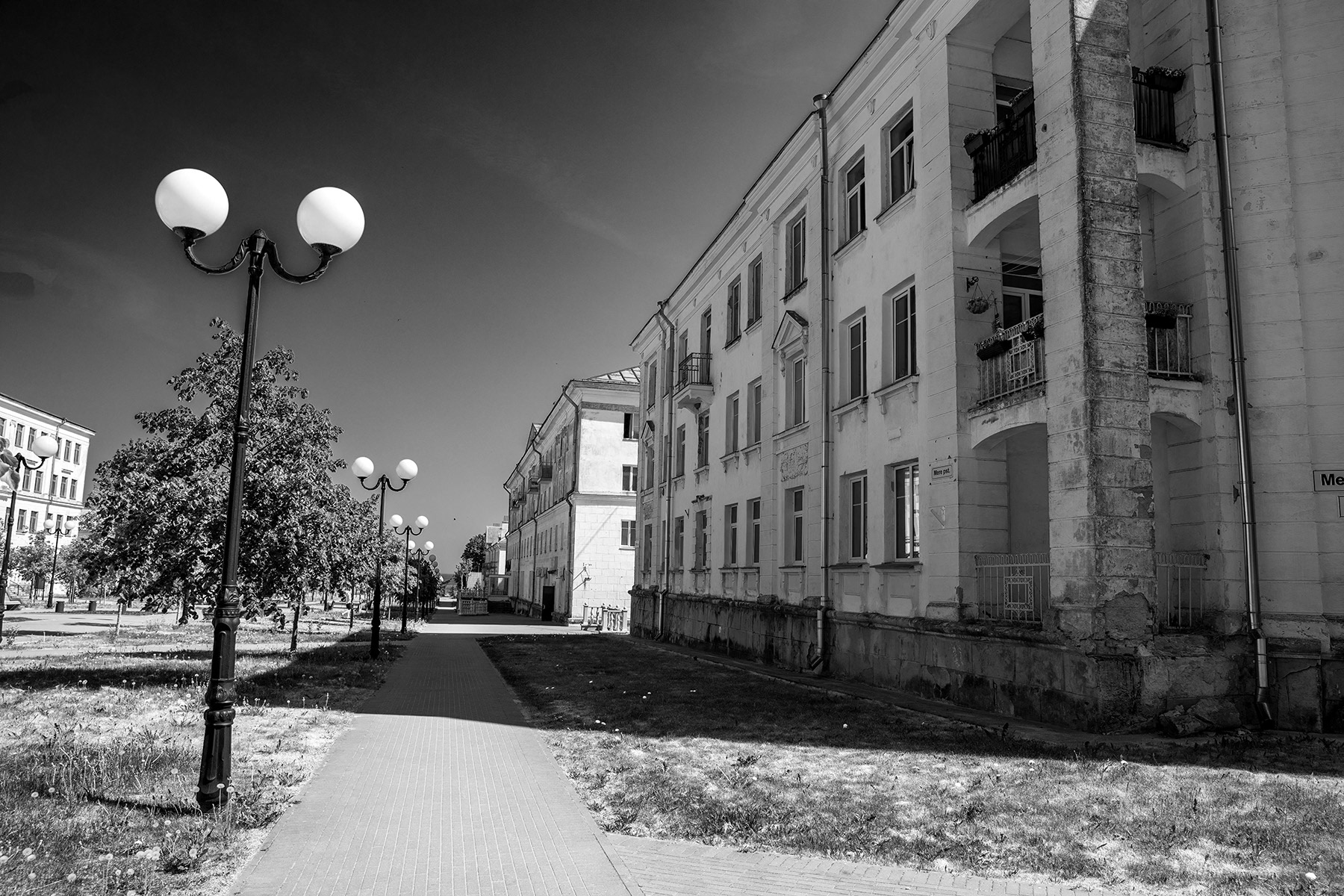

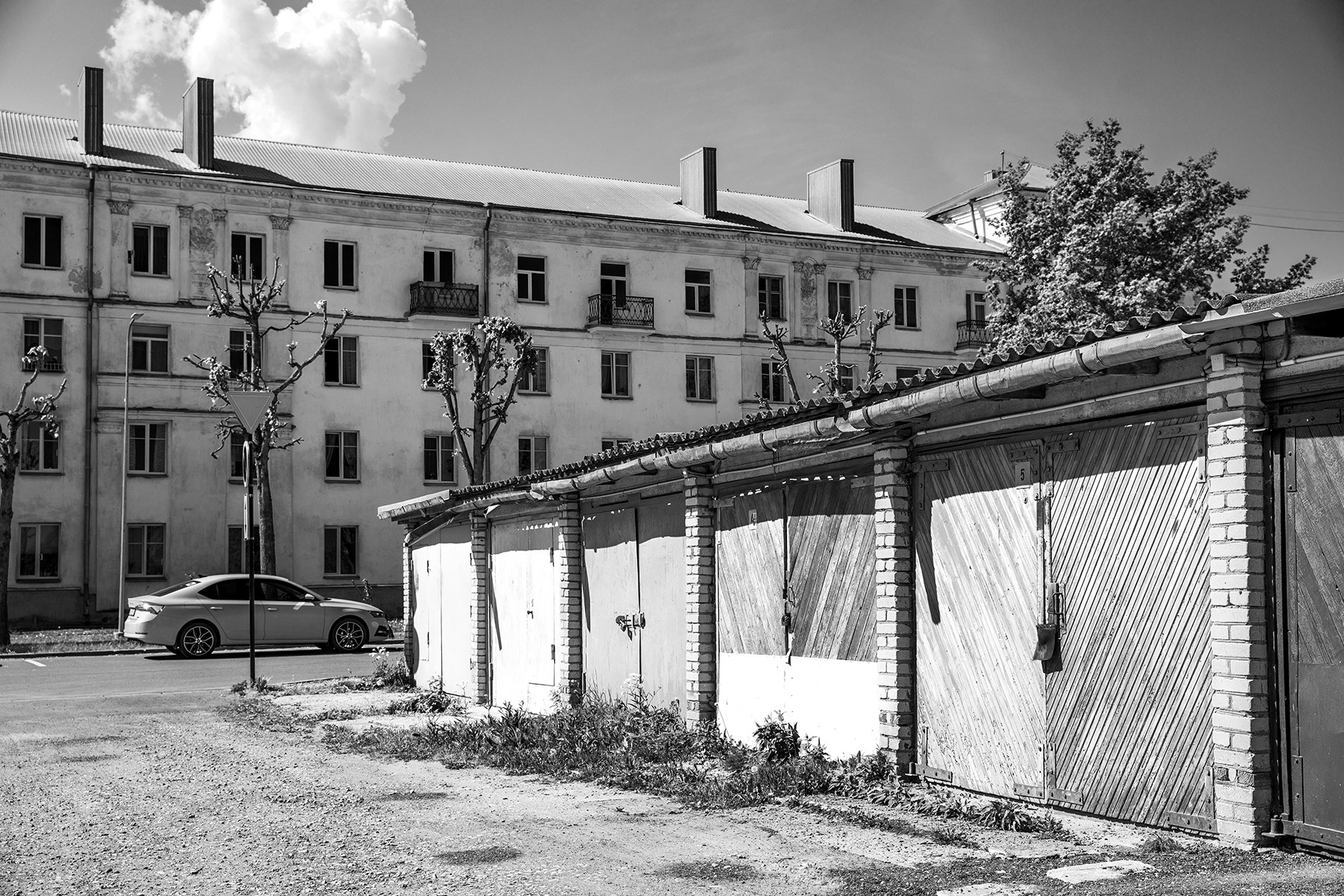
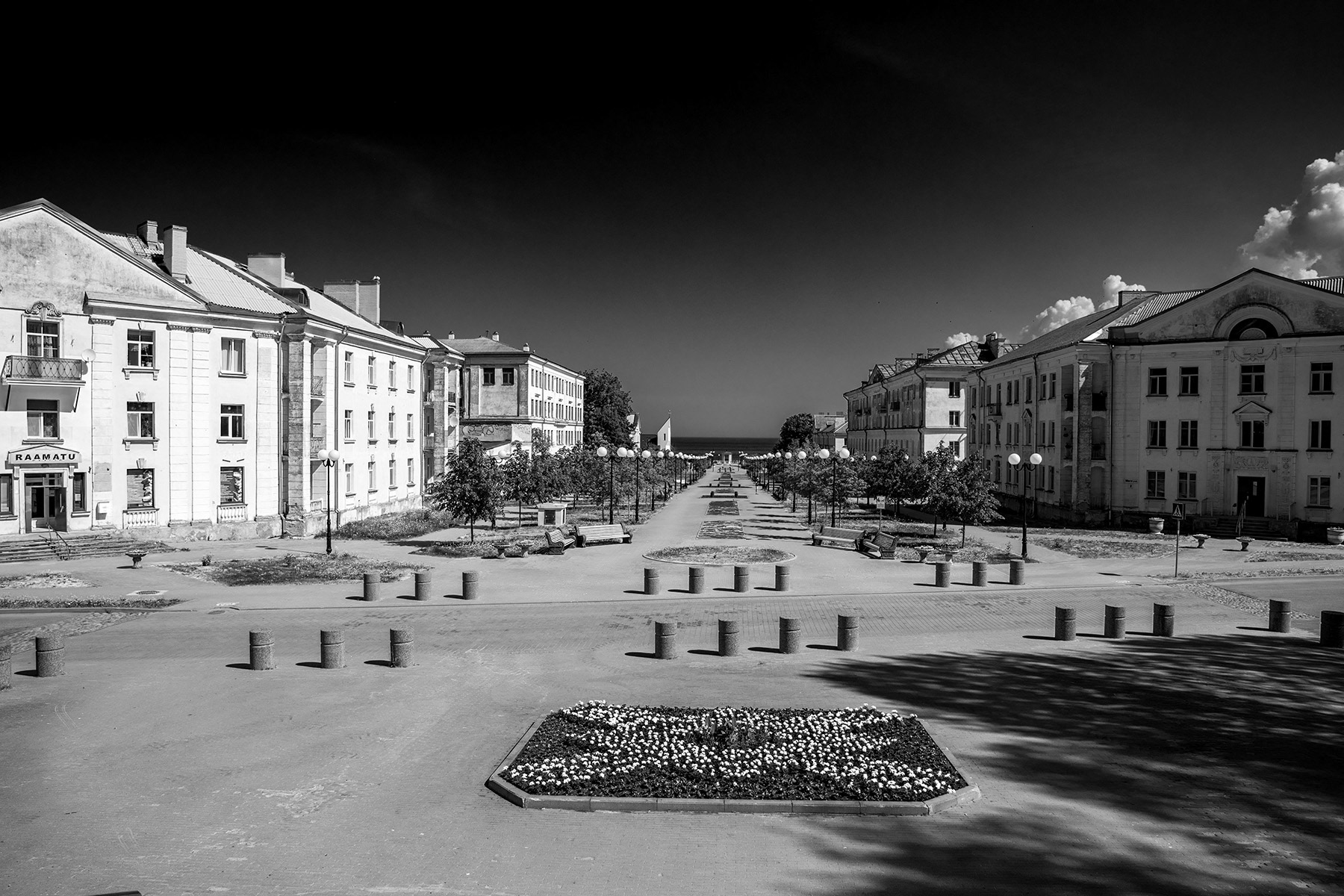
And then it was on to Narva, the river and the border with Russia…
That river, the river Narva. Anthony Doerr has a great short story called “The River Nemunas” which is set in Lithuania and about a girl and her grandfather reclaiming what they’ve lost by fishing for sturgeon. There are sturgeon in Idaho too, and I wondered if there were surgeon in the Narva. I asked Juhon and he did not know. In a rugged, disconnected place like Idaho, rivers are the lifeblood. They feed, hydrate and allow connection for communities. What I’m saying is because rivers are familiar to me, I felt grounded walking the Narva, feeling the breeze and the shade from the rising thunder clouds, and listening to the waves roll over river rock. I could viscerally imagine floating the river, feeling its currents and eddy lines. And then when you bring your attention off the water, castled fortresses on each side emphasize that this has been a historic line of demarcation between powers for centuries. Juhon told me that the EU had provided millions of dollars for park space to be built upon each side of the river as a gift of good will. On the Estonia side there’s full-grown trees, a paved bath with bike and pedestrian lane, places to sit and seek solace, lion statues, and a water pond with park and beach for leisure. On the Russian side? Weeds, boulders, an old dirt path and no shade. The money for that side disappeared.
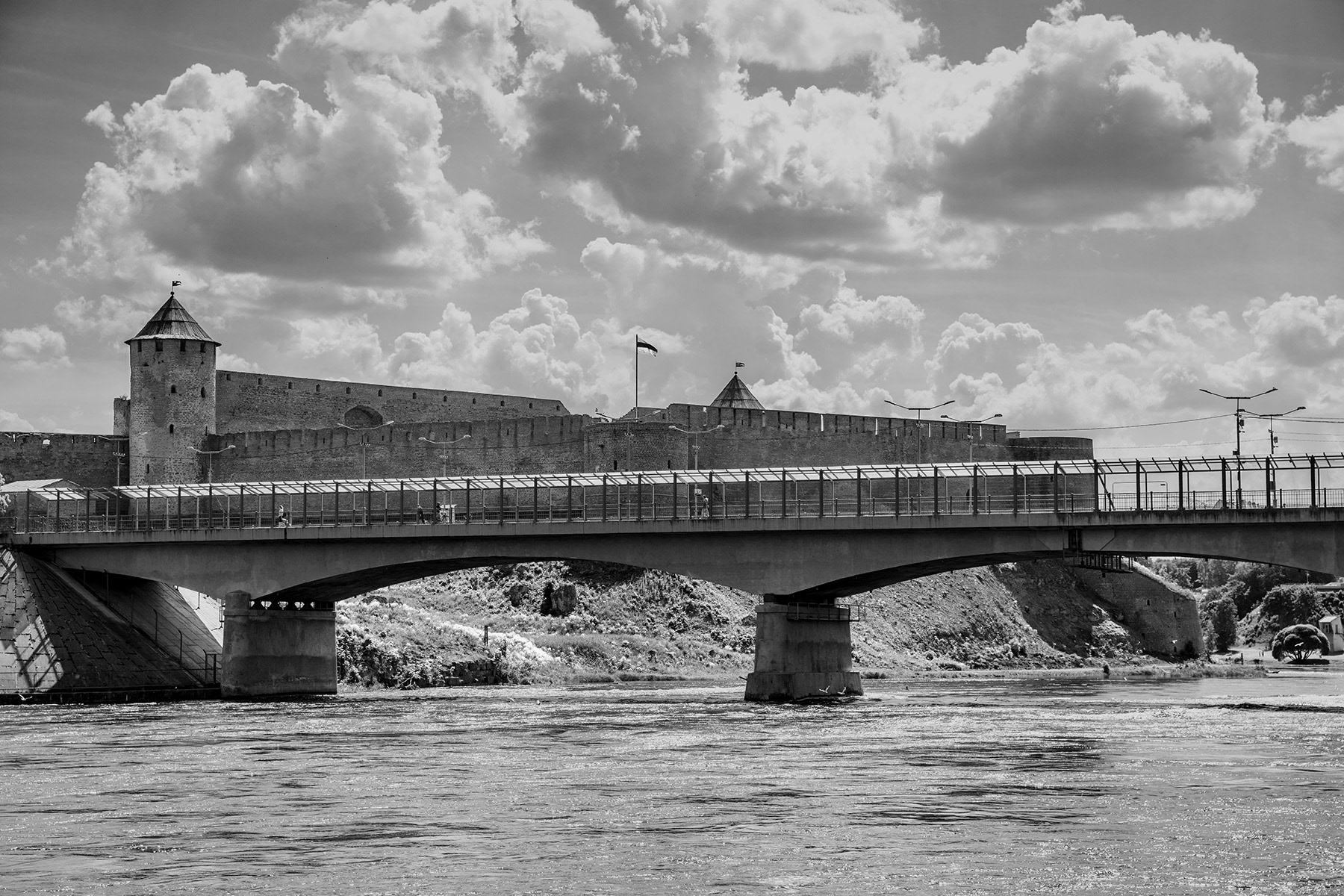
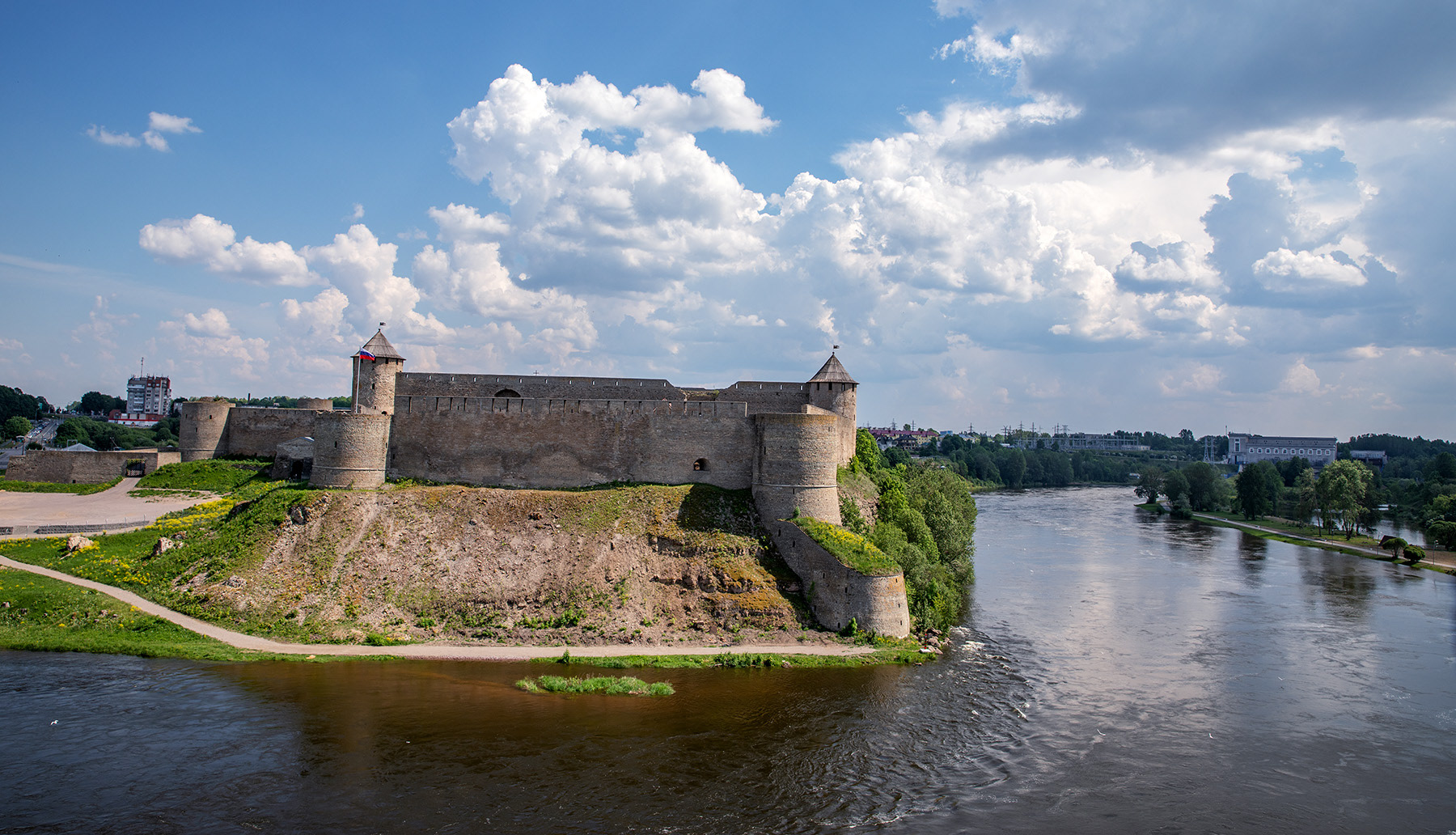
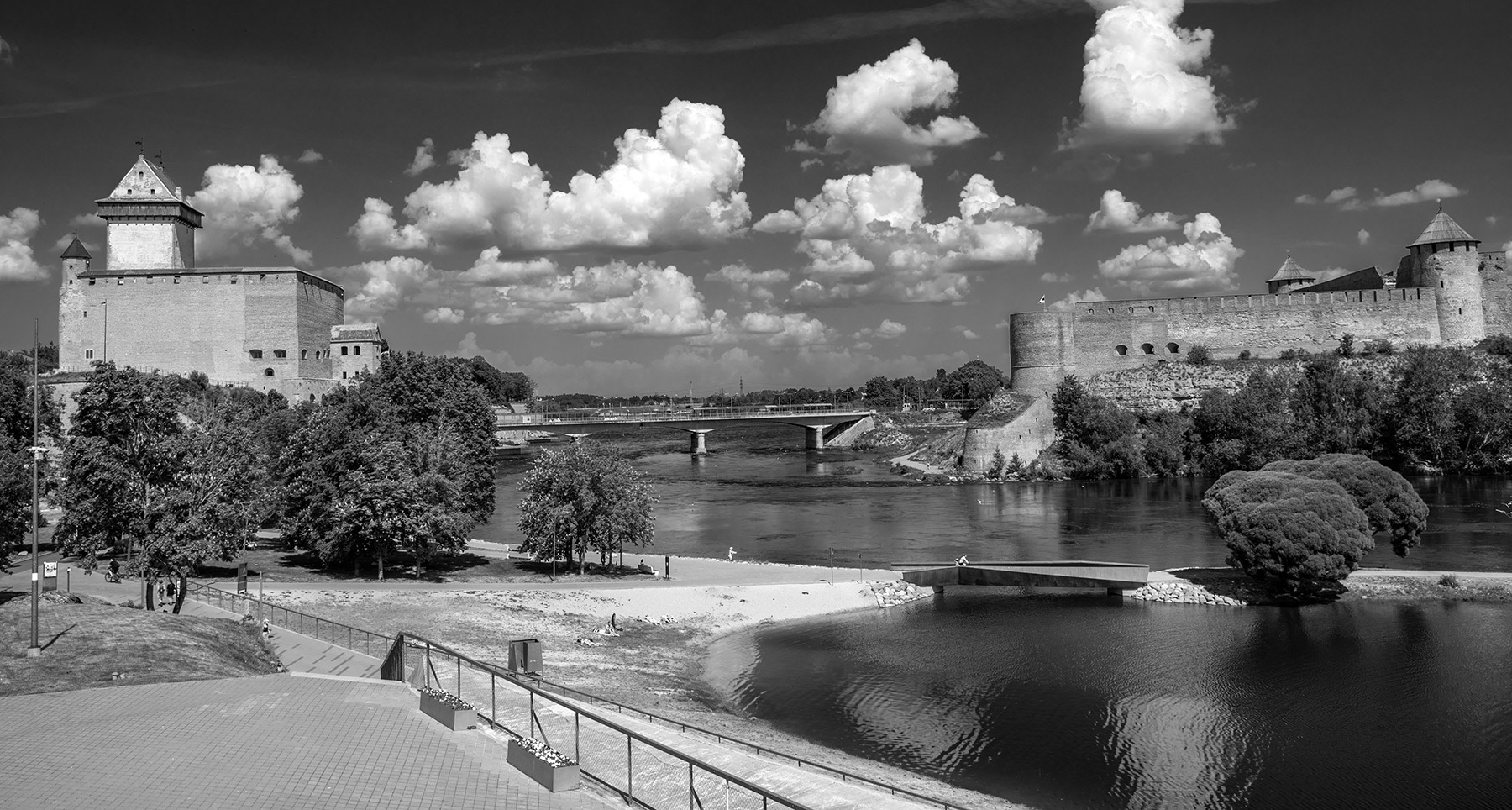
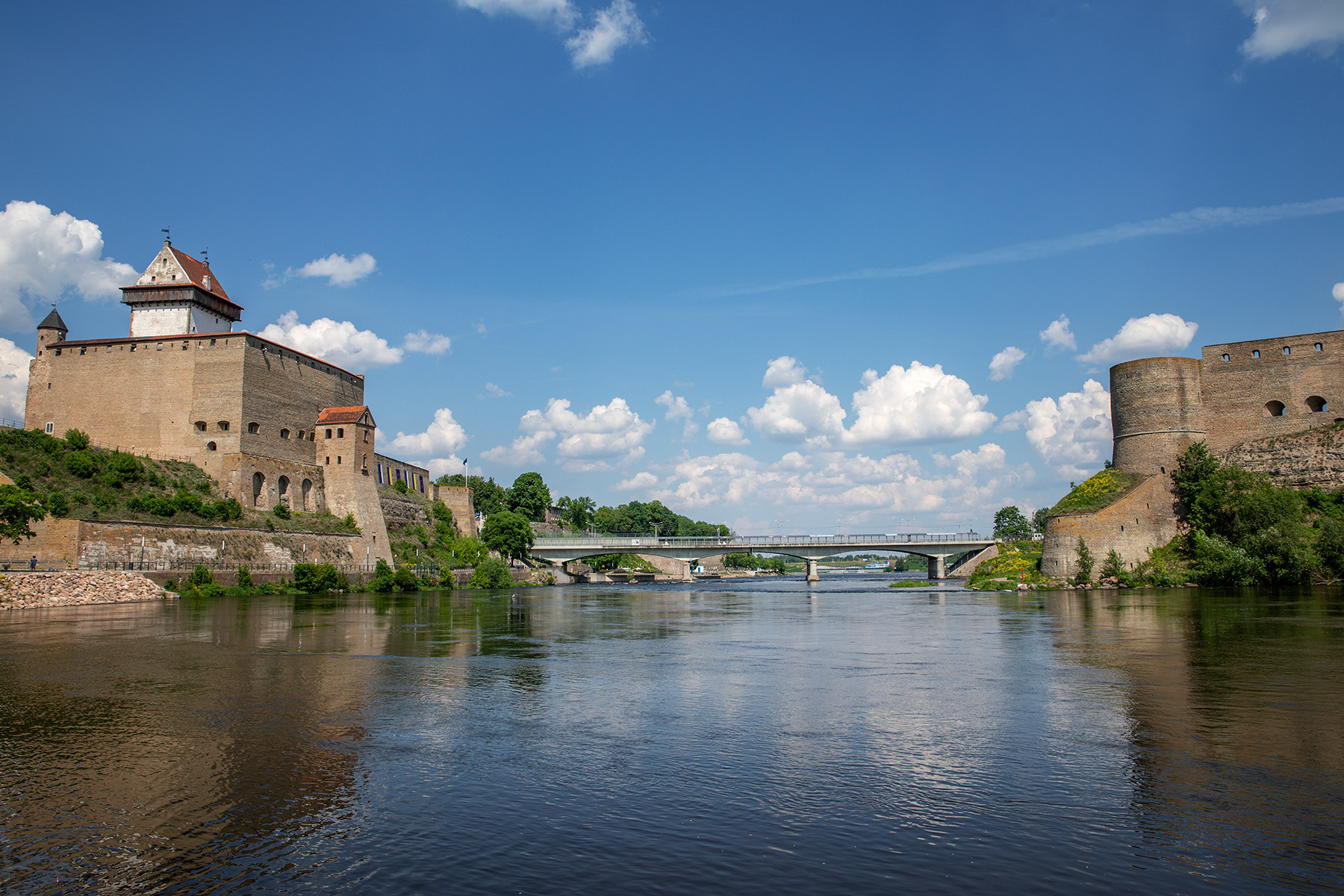
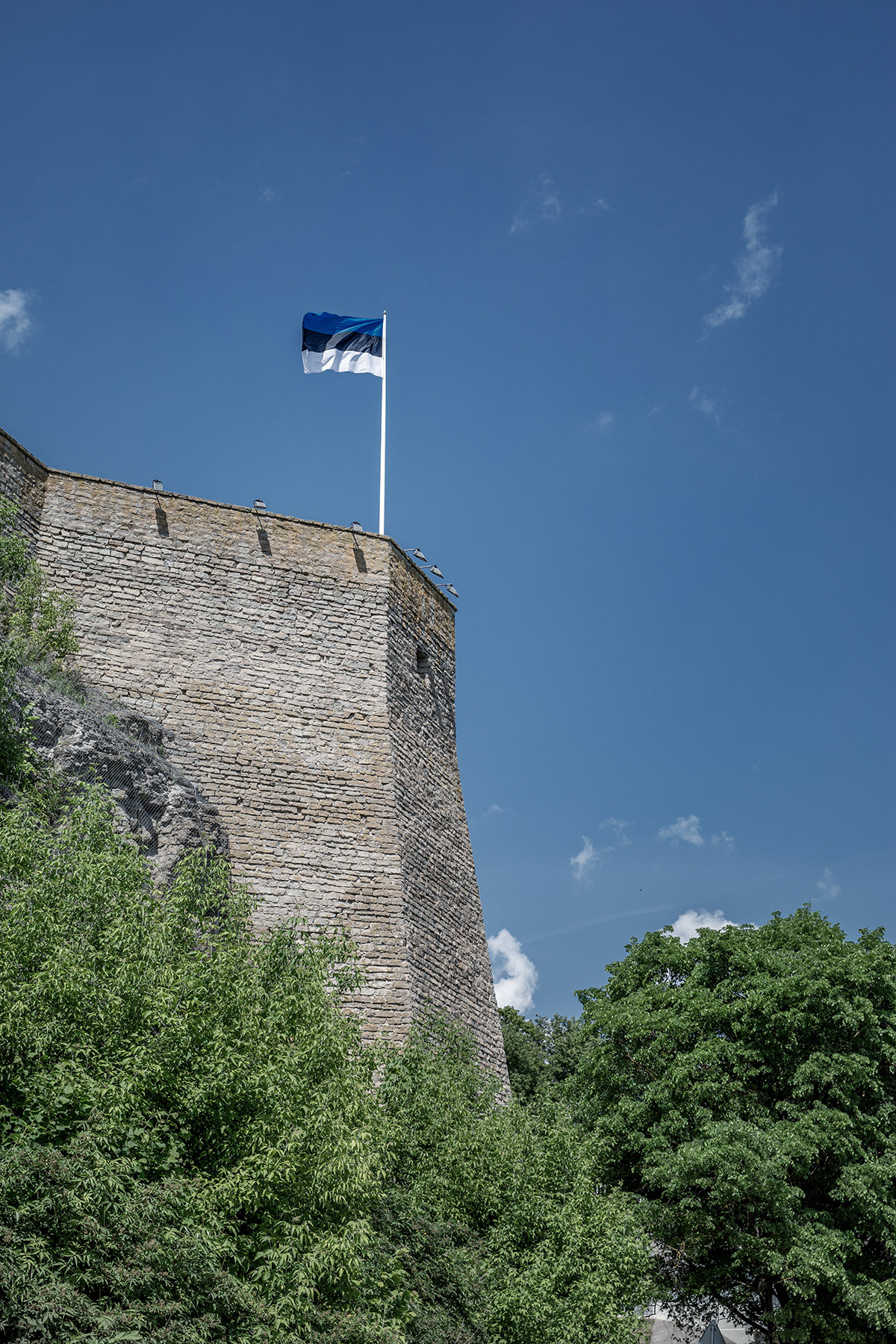
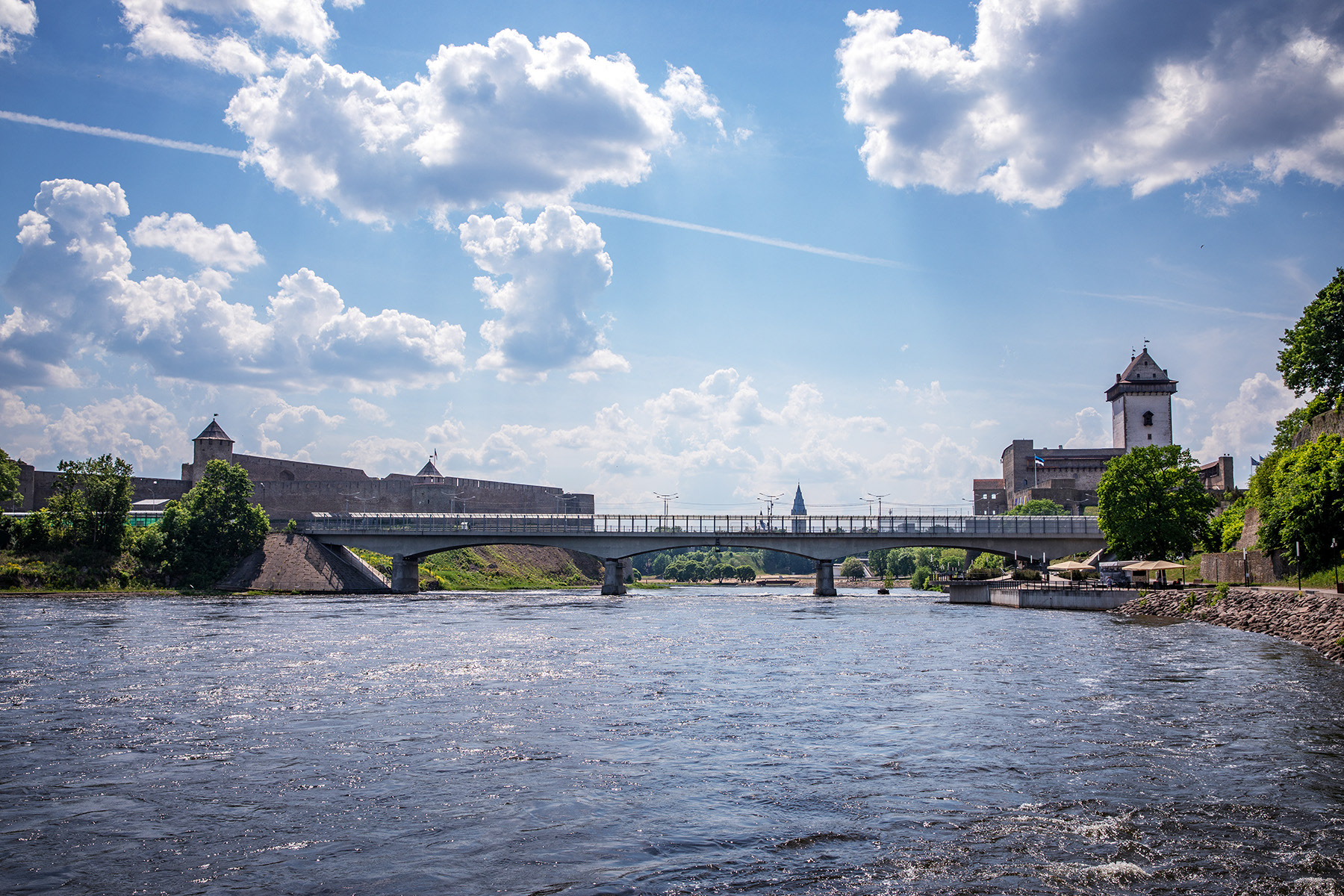
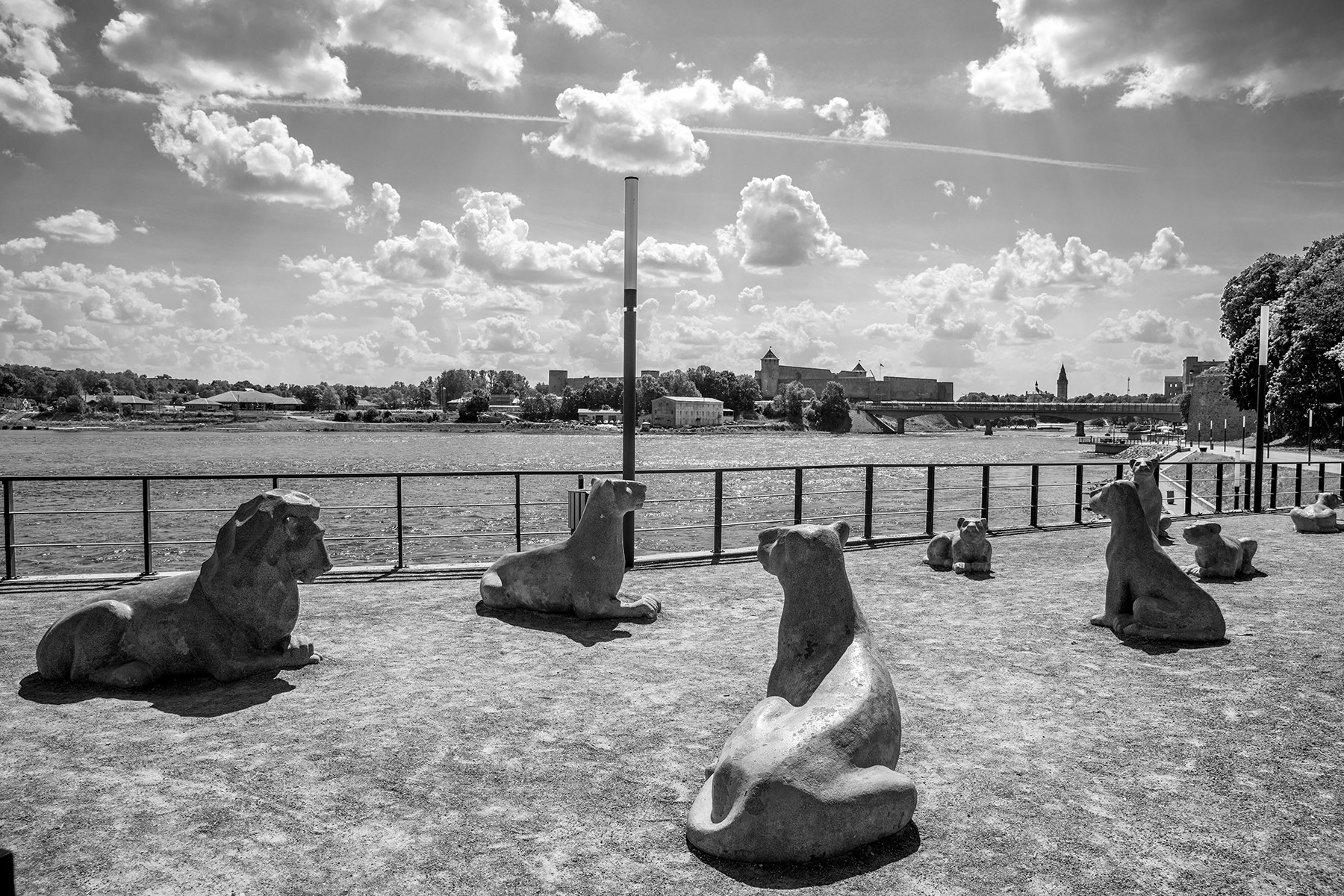
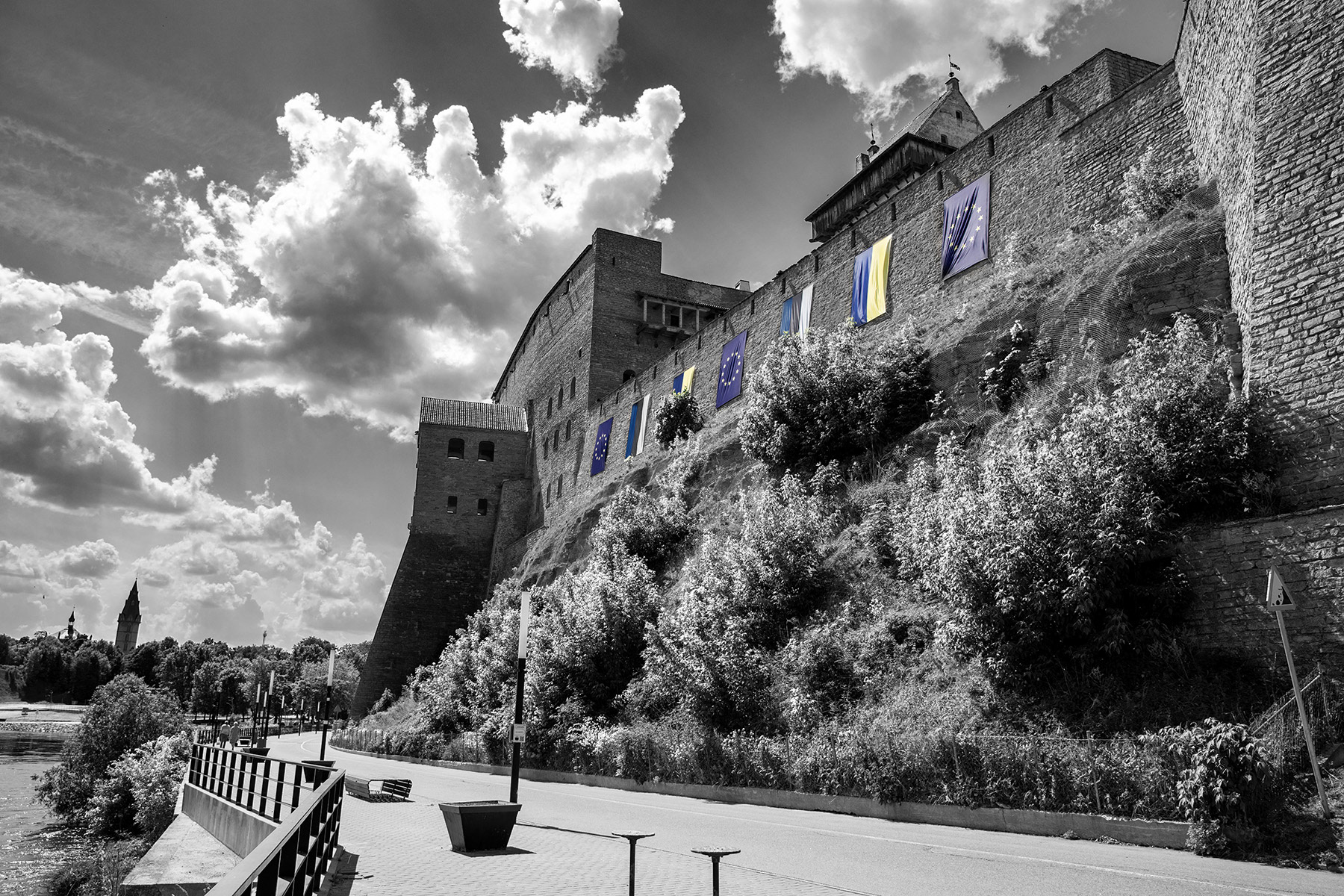
Here's what’s interesting about Narva. It’s always been an industrial town because of the river, and it was heavily bombed during World War II - by the Soviets, not the Germans. Usually the Soviets didn’t bomb places because they intended to occupy and didn’t want to have to rebuild. In this case, the bombing of Narva caused ethnic Estonians to flee and after the war ethnic Russians took over the town. So today Narva is predominantly Russian.
Another important part of the story is that there used to be a centuries-old baroque style neighborhood next to the castle alongside the river. Both the castle and neighborhood were decimated by bombing. The Estonian government had the resources to restore the castle and fortress complex, but the Soviets bulldozed the baroque neighborhood and built over it, which essentially erased memory of it for decades because those who would remember had left.
Recently, decades later, a local historical society built this interpretive site outside the castle. The narrative speaks of what Narva was before the bombing and what came after. Photos of buildings before and after the bombing are displayed next to each other. This interpretive display then says something very important for a small nation trying to protect itself and its history – it calls out the aggressor’s reinvention of historical fact.
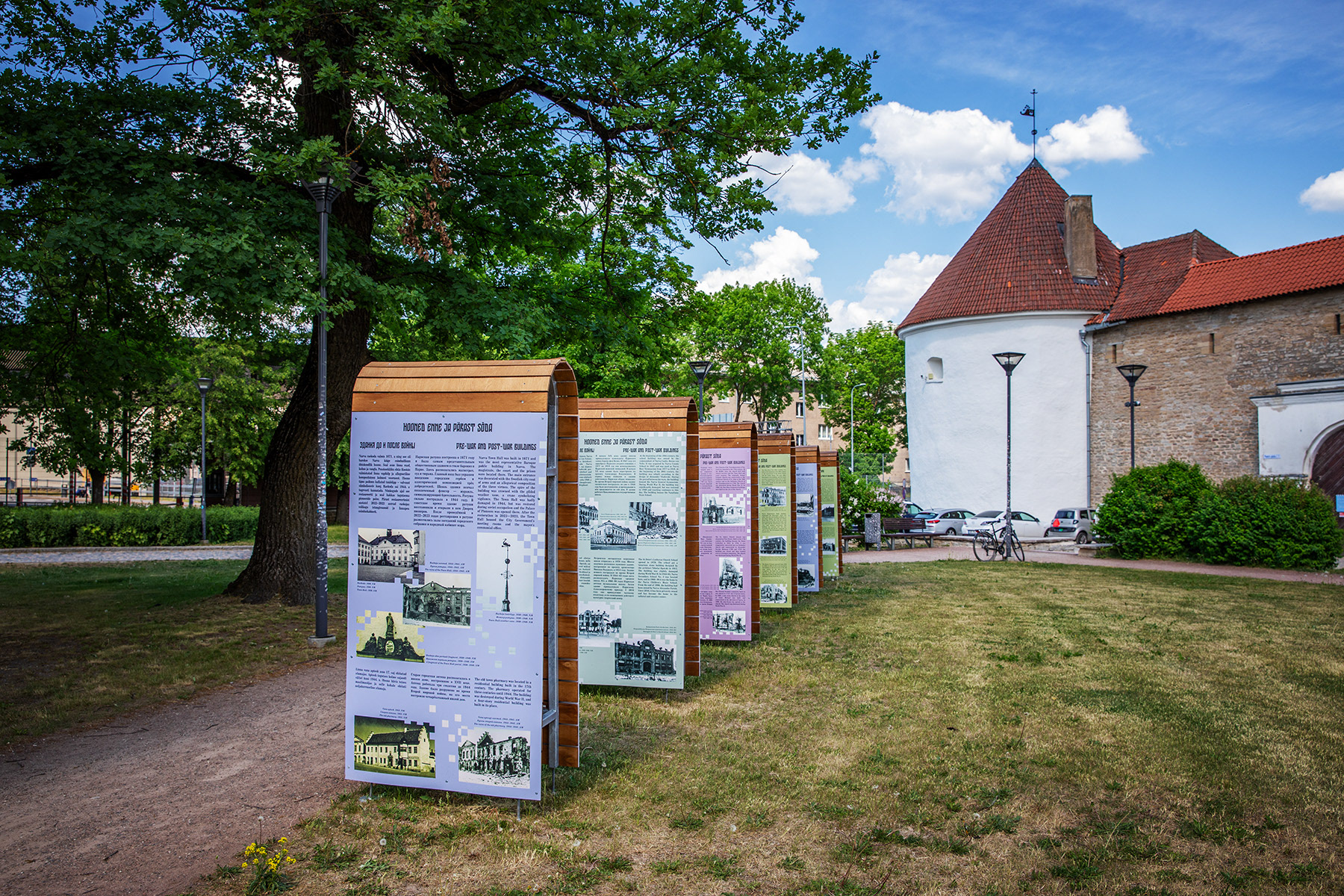
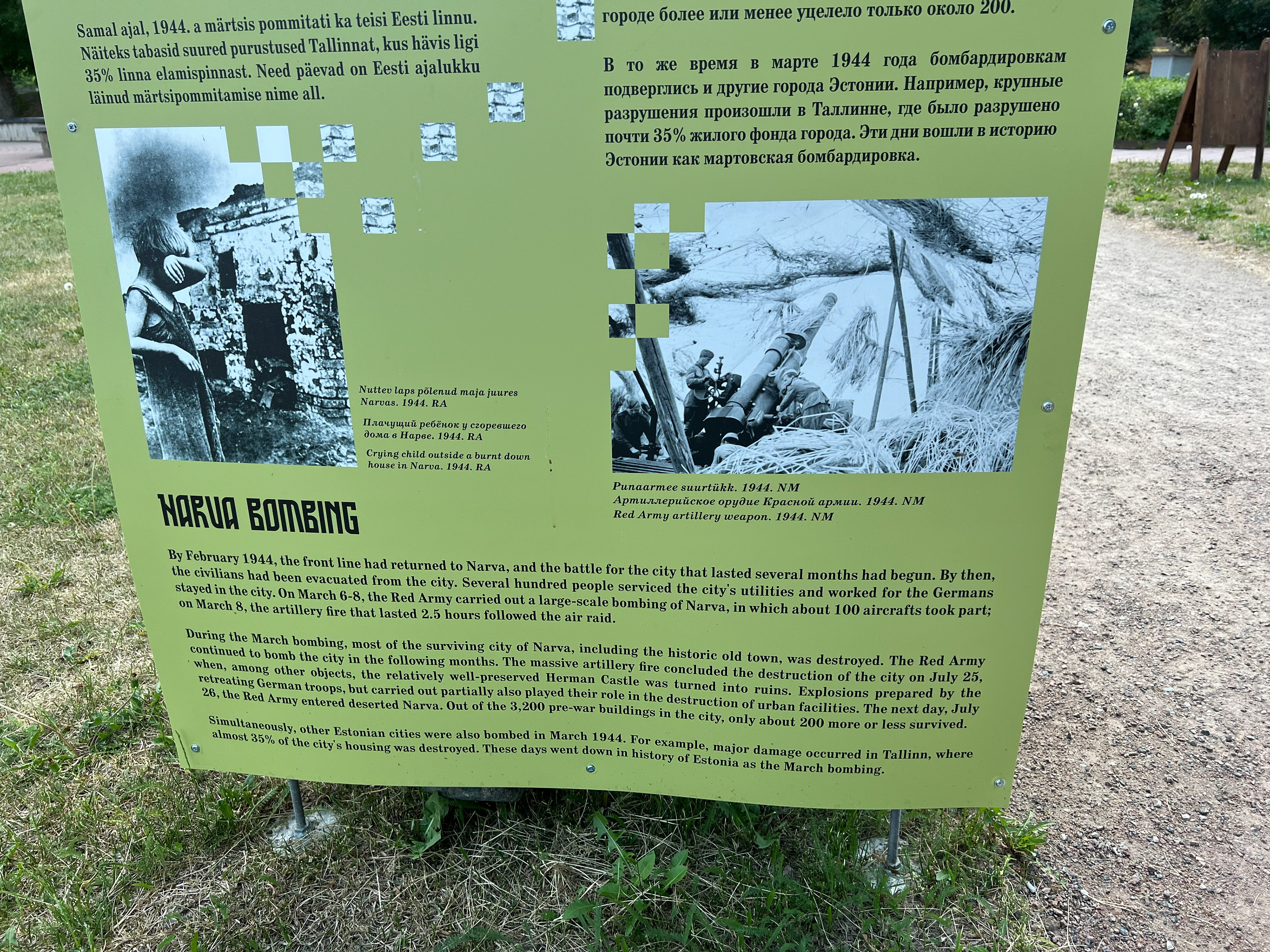
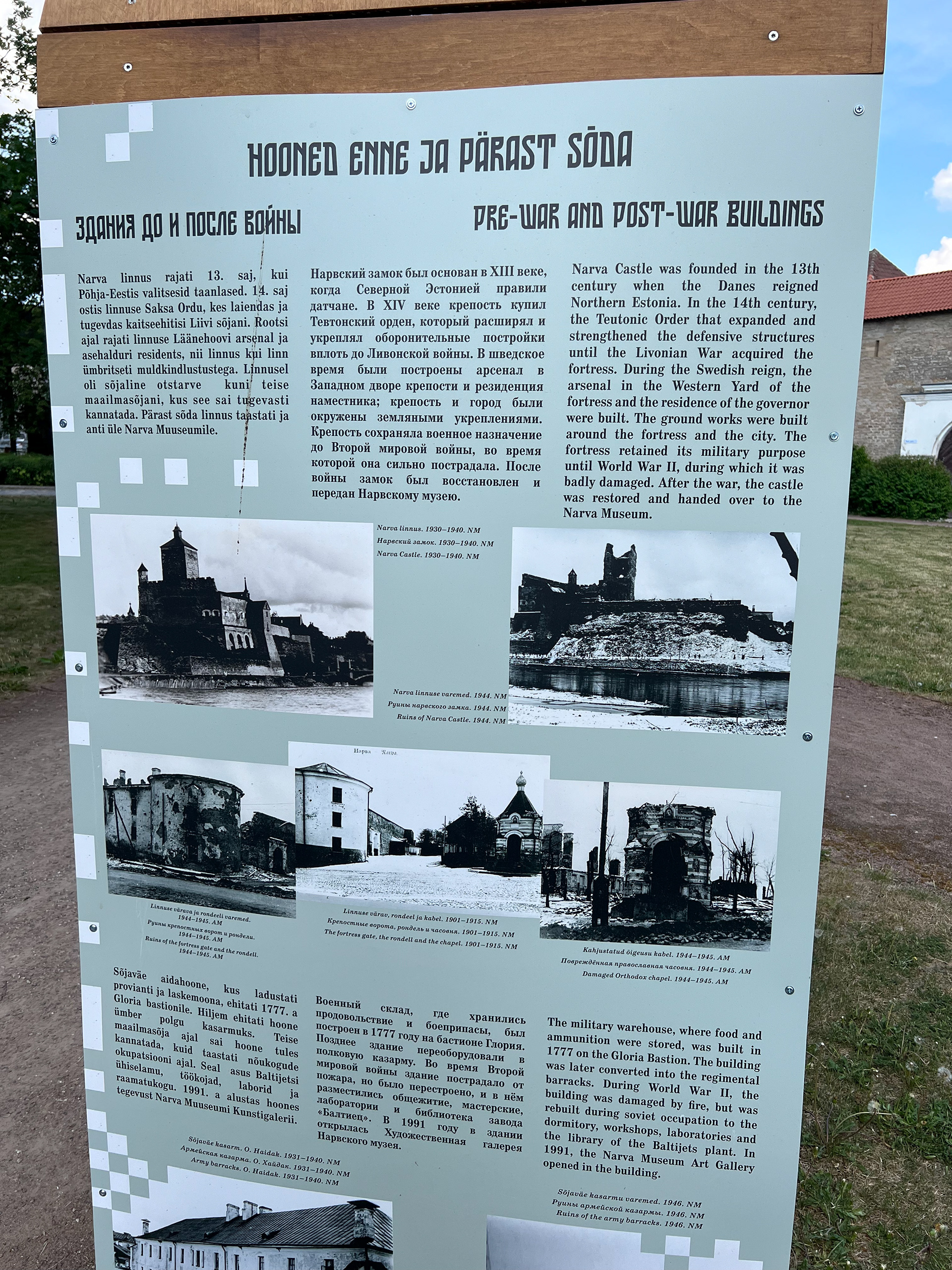
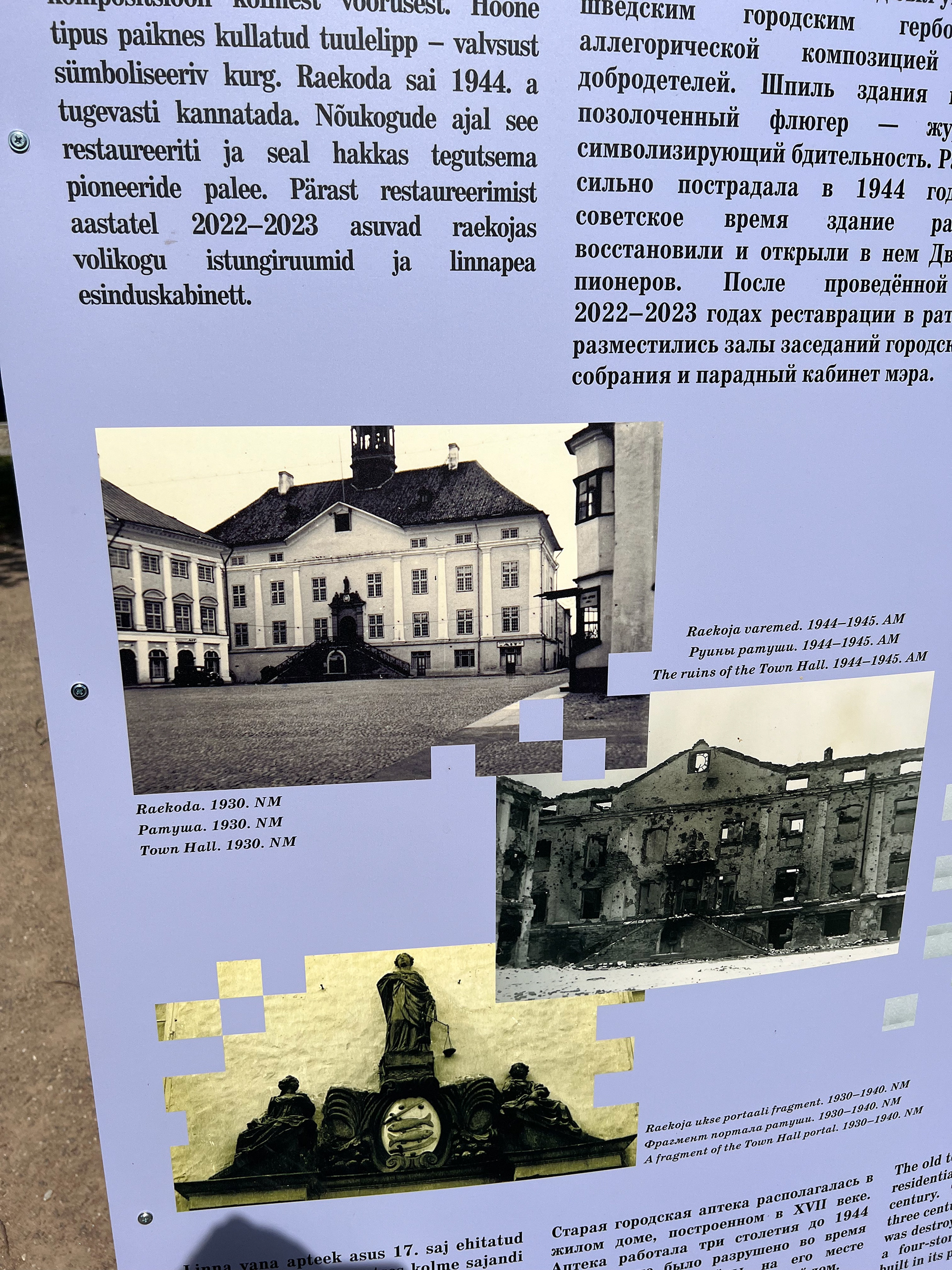
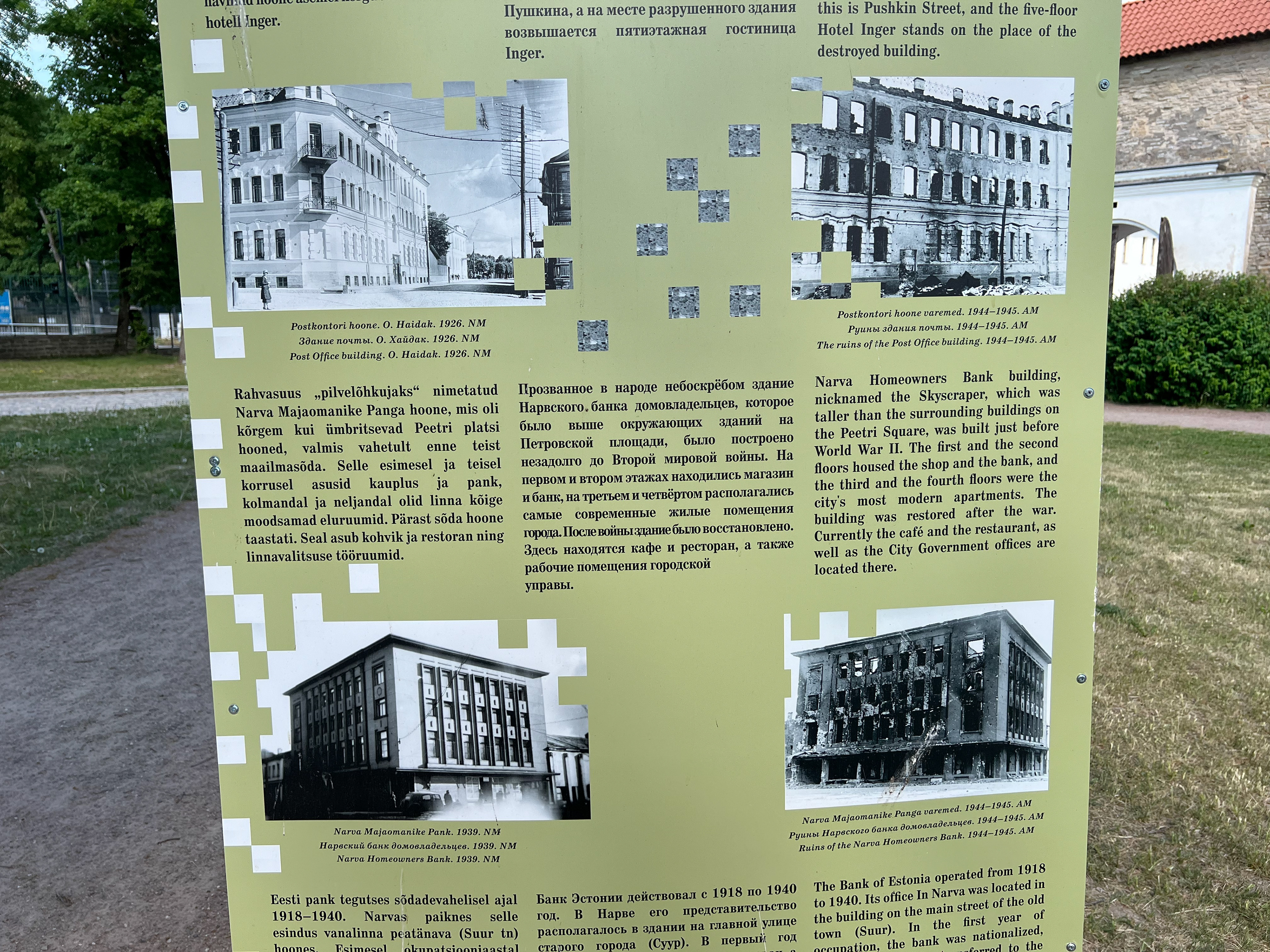
For decades, because of the high percentage of Russian speakers (only the younger generation has bothered to learn Estonian or English) and the long Soviet occupation, the community has traditionally gotten most of its media from Russian sources. Even today, most of their communications, entertainment, messaging, news sources – everything they hear and consume – comes from the east, outside the Estonia border. So not only did the historical images of a town they do not know existed touch a nerve, here’s the interesting bit of historical context on display for everyone to read:
“For propaganda purposes, the Soviet authorities named the capture of Narva the "liberation" and were especially proud of it. Events, publications, souvenirs, etc. dedicated to it helped create a narrative suitable for entrenching the Soviet regime. The impact of this narrative on Estonia's pre-war population was rather small. However, the opposite was true for the people who arrived from the Soviet Union after the war and had been under the influence of propaganda since the Bolsheviks came to power in 1917.”
This is the border now. The bridge is barricaded and closed to driving. When you spend time on the river and look up at the bridge, you will observe up to a half dozen pedestrians crossing. Apparently they are all Russian citizens. Juhon explained to me that Russians on each side of the river have property or business interests on the otherside and are allowed to cross to deal with official business. Otherwise, the trucks, the commerce, the people crossing to see family, the tourists, all of it is halted because of Putin’s propaganda and war of aggression in Ukraine. Which brings us back to Tallinn.
Once again Russia hovers and haunts everything Estonian. This image is the Russian embassy in Tallinn. While Estonia’s Prime Minister has been one of the most eloquent and outspoken voices rallying NATO support of Ukraine and Estonian citizens protest peacefully, Estonian police park at the barricade around the embassy 24-hours a day to protect what belongs to Russia because they don’t want any provocation. I’ll be candid, I was shocked at how comfortable the Estonians I spoke with (and Finns, Swedes, and on down the line) were with the most fraught foreign security moment in Europe in decades. On the one hand, it’s this weight that affects everything from their economy, their strategic future, and every plan an individual makes because increased aggression will have serious implications for personal and national freedom. However, it never seemed all consuming. It’s like there’s this genetic trait in their blood as if they’ve been here before, so they move forward innovating, creating, building, and thriving for as long as they can until that moment when everything ceases.
When I was here and I was younger, I took the time at one point to stand between the arches of the entrance of old town and reflect upon what I was standing in between. In one direction was that tower built by the Soviets and in the other direction was that franchise from my home country. A common trait of young adults is that they have an inflated sense of self and what they know, yet looking at this image and thinking of my thoughts in the moment 24 years ago, I’m impressed at the actual maturity I had at the time. I was old enough, mature enough, and well-read enough to understand the gravity of the symbolism of the two representations between which I stood. However, I recall how present I was, and I recall making very few assumptions about what the future would hold. I recall how much I listened rather than talked, and I think I felt the gravity and the emotion that was floating over this place. To have gone back now, I have so much admiration for what this society has built and how they move forward even as the weight of the big bear from the east has come out of hibernation. But then it makes wonder - and I wish I had asked - did the bear ever really hibernate in the 20+ years while I was gone and I (along with everyone else) had failed to perceive the threat until Ukraine was invaded in February of 2022? Is that why it seems like they keep moving forward, building internally, and innovating for the future even though there is intense geopolitical danger along their border? Because Estonians have always lived under the rule of another land and they know how to hold onto their spirit. I have tremendous gratitude to have stayed with them and heard their stories two decades ago and to have the time to revisit now. I have great admiration for Estonia.





